#worldbuilding classes
Explore tagged Tumblr posts
Note
I need world-building questions for royalty and class systems, please
Sure!
Worldbuilding questions to get the creative juices flowing 32
Theme: Class Systems

Now it's been awhile since I've researched or worldbuilt this stuff, so I did some side research to make sure I'm bright on ideas
Now class systems are very very complicated. I'm not very confident in them myself, so at the end I've added some nice videos to watch, thing to research on, and places to start.
How many classes is your society divided into? Is it a feudalism system, caste system, slave system, or something else?
Can all classes take part in the ruling class? If not what classes can? What roles in society can rule? Is the ruling class its own class?
How is the population distributed by class? How is the hierarchy built? Who has it the worst? Who has it the best?
What advantages does each class have? What disadvantages does each class have? What decides who's in what class?
Class systems are not just divided by economic status. In fact they can be divided by many things at once. So what divides yours? (race, economic status, birthright, religious, species, magic branches)
What helps keep lower classes low? What helps keep higher classes high?
What type of change is occuring? Is it more peaceful? More chaotic? More violent? Is it looking successful?
What cultural divides play into classes? How does culture differ across classes?
What group controls the society? How does this group do so? What could happen to cause this group to lose this power?
If the current ruling class was overthrown what would the aftermath be like?
Not every class runs off of our five modern ones. Go back in time and class systems change sometimes drastically. So name your class levels. Where do these names derive from?
What class systems did the society go through in the past? How does this affect their modern day?
How do class groups view each other? Is there discrimination? Is there privilege?
What decides a class' value? What makes them that valuable?
What does education, economic status, and potential religion do for the class system?
What does the current events; war, sickness, alliances, etc; affect the class system? (These events tend to be great moments for classes to change)
Extra:
Class Systems to study
Our Modern Social Class
Medeival Social Class
Ancient China Classes
Caste Systems of India throughout time
Japanese castes
Native American Roles
Amazing Videos
How Class Systems Fall: https://youtu.be/bbkSim9iaOQ
How Class Systems Work: https://youtu.be/8tjvul5e1y4
Historical Moments
Russian Prohibition
French Revolution
Any bit of Soviet History, really I'm not kidding, the formation and fall of the USSR was a big class system historical fuckery mess
American Progressive Era
Republic Era of Qing China
Finally Books that have good class system worldbuilding
Grishaverse Book Series
Watership Down
Tale of Two Cities
#worldbuilding#worldbuilding class system#worldbuilding class systems#worldbuilding questions#worldbuilding questions to get the creative juices flowing#worldbuilding class#worldbuilding classes#worldbuilding ideas#worldbuilding tips
165 notes
·
View notes
Text
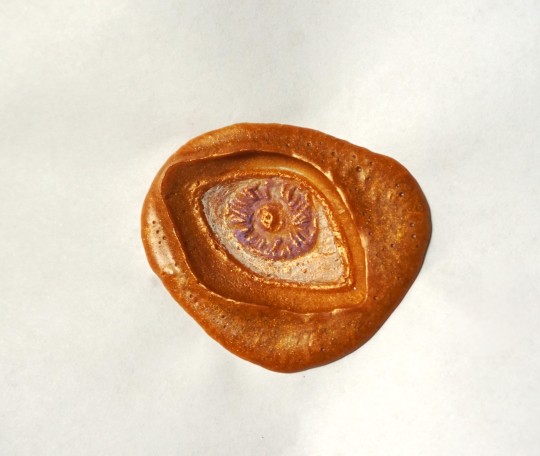
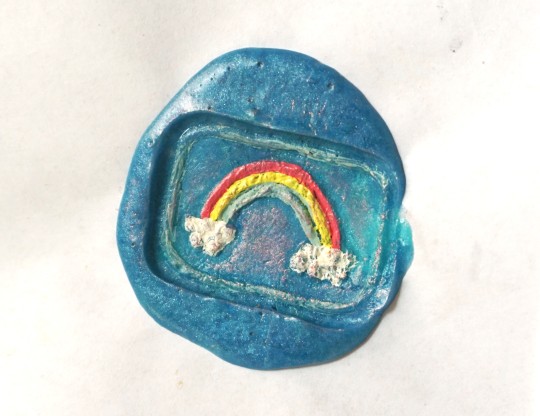

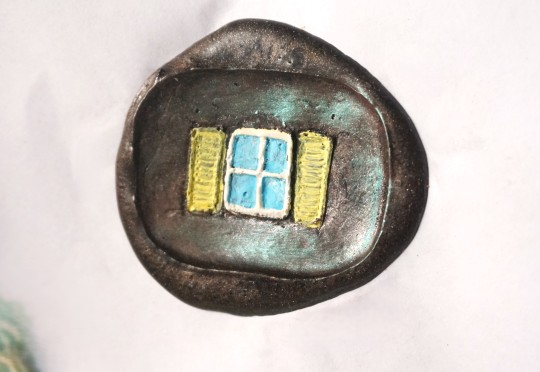
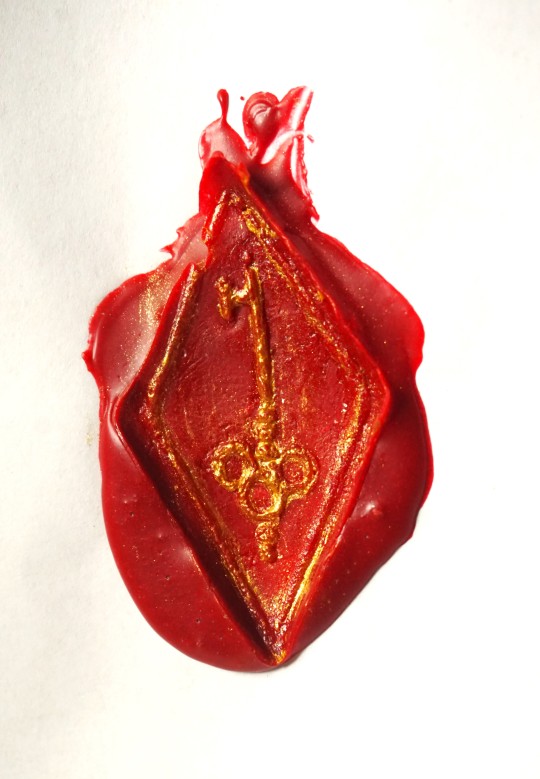



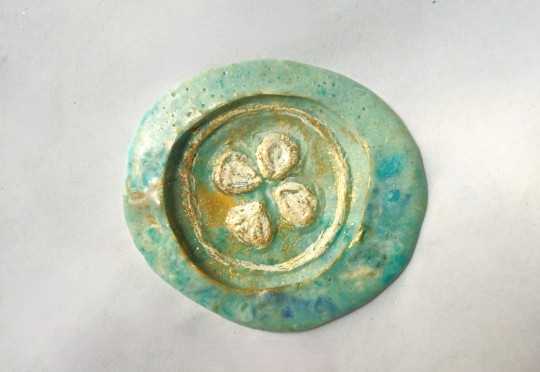
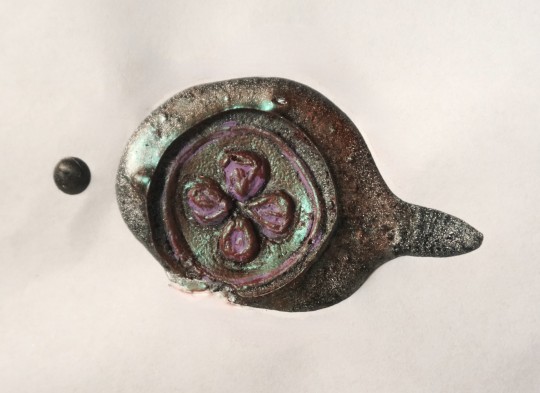
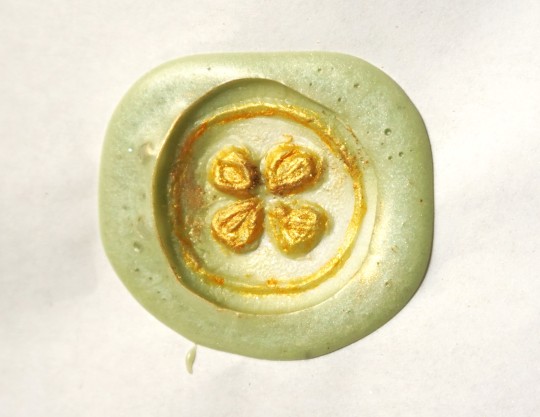
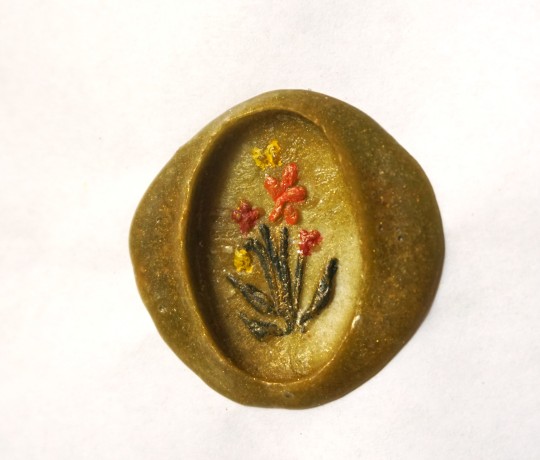
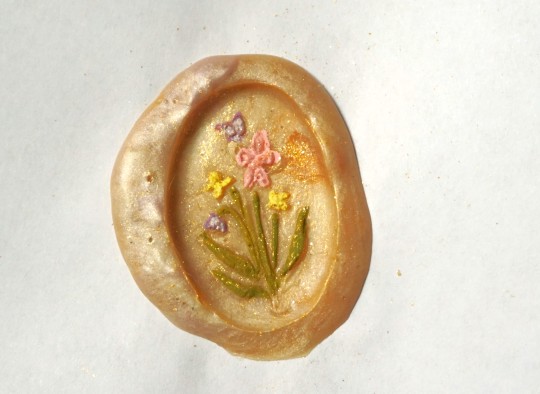
I made a few new wax seal stamps out of clay (like the ones I did for my worldbuilding stuff forever ago), this time just of random symbols that I thought might look good done in the style of painting over the raised part of the wax or etc. :0c Some of them aren't carved deep enough to really show up that well, but overall they worked okay for being clay lol
#wax seal#crafts#wax stamp#stationery#Window one is kind of stinky.. I was imagining like a swirly night sky sort of looking thing so it would be a surreal contrast of a night#sky with a window in the middle that shows a daytime sky - but the silver and purple wax kind of mixed too much together#with the black and it just looks very plain black and not all that starry or anything hjbhj.. Of course the eye is probably my favorite#since all I ever do is draw eyes and still like eye imagery for some reason. The four leaf clover is very lumpy and skrunkty but also it wa#the smallest in size out of all of them so was easier to do multiple stamps of just to try it out.#The heart with eyes wax is actually more swirly in person. I wanted it to be a mix of light pink and red and white. and the wax#did kind of all blend together but in person you can definitely see MORE of the intentional swirlyness. in this it just looks plain pink.#I was going to do one eye in the heart but it looked weird. but now two seems too plain. i could have done 3?? in a pattern.. hmm#alas. I wish I could make actual metal ones. With the clay i have to paint them in a thin layer of olive oil before stamping because#otherwise the wax just kind of gets stuck in the grooves of the clay and then you can't pull it up. Very wacky ''unprofessional'' looking#set up where I'm hot gluing circles of sculpey clay to short stumps of a wooden dowel that I sawed apart with a serrated bread knife#and then using an old paintbrush to put olive oil on them whilst holding a spoon over a yankee candle flame hjbjh#ANYWAY.. I think if I were middle class/rich/etc. this would be one of the main things in my crafting room is like.. SO many colors#of wax. and all different custom made stamps designed by me. which could be much more elaborate in actual metal.. muahaha.... >:)c#RHGghhh... I actually don't want to talk much about it since (this is probably just my Obsessed With My Own World Artist Delusions) I#think I have a really cool idea for a game that could genuinely be successful if i ever get to make it and I don't want to give#everything away and spoil the whole plot/concept in hopes that one day I can actually do it - BUT - a game that I'd like to make after the#visual novel I'm making now has partially to do with the main character working as a sort of writer/scribe/artist assistant in an elven#city (set in my world/with my worldbuilding species and versions of elves and etc) and I was thinking of maybe incorporating#somehow being able to collect little writing type items like these like.. you can get different wax seal patterns or pens or etc. when I do#stuff like this in Real Life it always makes me think of that like.. ouh... this is good research.. what it shall be like to be a littol#elf collecting wax seals and such.. indeed... GRR i need to be finished with my current game NOWWW... i MUST work on other#thingss... aughh... ANYWAY.. yay. accomplishment to do One Single Thing other than Sit In The Summer Heat And Rot#though also hilarious as this was the first cool-ish day that was below 80F in a while hgvh#waking up like 'wow.. i actually feel okay today?? like I could do things?? how mysterious.. I wonder why..?? :0'' Its The Weather You Fool#Tis Always The Weather
248 notes
·
View notes
Text
“obviously people in the modern day can recognize what nesta did as verbal abuse even if they didn’t have the words for it in univers-” well if we’re using modern day terms Rhysand and Feyre are segregationists who allow child soldiers and are enacting both collective and multigenerational punishment on an entire city of people. so why don’t you ruminate on that for a little bit.
#if the vague agreement btwn rhys’s family and hewn city is ever expanded upon it will be done in a way that absolves rhys of all blame#but for now the women and lower class of hewn city are declared victims of a heinous dictatorship#aided and abetted by one of their own#children born well after the attack on mor will now suffer segregation in Velaris as retaliation for the sins of their parents#and grandparents#i don’t believe everyone in hewn city is innately evil sarah.#that won’t work on me#and as for the child soldiers don’t get me started#oh we’re sending the Illyrian females to train#are you making them go at eight years old like you do for the boys#huh#uhmmm#acotar worldbuilding#acotar critical#anti acotar#anti rhysand#hewn city acotar#hewn city#the court of nightmares
109 notes
·
View notes
Text
WoT Meta: Feudalism, Class, And The Politics of The Wheel of Time
One of my long standing personal annoyances with the fantasy genre is that it often falls into the trap of simplifying feudal class systems, stripping out the interesting parts and the nuance to make something that’s either a lot more cardboard cut-out, or has our modern ideas about class imposed onto it.
Ironically the principal exception is also the series that set the bar for me. As is so often the case, Robert Jordan’s Wheel of Time is unique in how much it works to understand and convey a realistic approach to power, politics, government, rulership, and the world in general–colored neither by cynicism or idealism. How Jordan works the feudal system into his world building is no exception–weaving in the weaknesses, the strengths, and the banal realities of what it means to have a Lord or Lady, a sovereign Queen or King, and to exist in a state held together by interpersonal relationships between them–while still conveying themes and ideas that are, at their heart, relevant to our modern world.
So, I thought I’d talk a little bit about how he does that.
Defining the Structure
First, since we’re talking about feudal class systems, let's define what that means– what classes actually existed, how they related to each other, and how that is represented in Jordan’s world.
But before that, a quick disclaimer. To avoid getting too deep into the historical weeds, I am going to be making some pretty wide generalizations. The phrases ‘most often’, ‘usually’, and ‘in general’ are going to be doing a lot of heavy lifting. While the strata I’m describing is broadly true across the majority medieval and early Renaissance feudal states these things were obviously heavily influenced by the culture, religion, geography, and economics of their country–all of which varied widely and could shift dramatically over a surprisingly small amount of time (sometimes less than a single generation). Almost nothing I am going to say is universally applicable to all feudal states, but all states will have large swathes of it true for them, and it will be widely applicable. The other thing I would ask you to keep in mind is that a lot of our conceptions of class have been heavily changed by industrialization. It’s impossible to overstate how completely the steam engine altered the landscape of socio-politics the world over, in ways both good and bad. This is already one of those things that Jordan is incredibly good at remembering, and that most fantasy authors are very good at forgetting.
The disparity between your average medieval monarch’s standard of living and their peasants was pretty wide, but it was nothing compared to the distance between your average minimum wage worker and any billionaire; the monarch and the peasant had far more in common with each other than you or I do with Jeff Bezos or Mike Zuckerberg. The disparity between most people’s local country lord and their peasants was even smaller. It was only when the steam engine made the mass production of consumer goods possible that the wealth gap started to become a chasm–and that was in fact one of the forces that lead to the end of the feudal system and the collapse of many (though by no means all) of the ruling monarchies in Europe. I bring this up because the idea of a class system not predicated on the accumulation of capital seems pretty alien to our modern sensibilities, but it was the norm for most of history. Descent and birth mattered far more than the riches you could acquire–and the act of accumulating wealth was itself often seen as something vulgar and in many countries actively sinful. So with that in mind, what exactly were the classes of feudalism, and how do they connect to the Wheel of Time?
The Monarch and their immediate family unsurprisingly occupied the top of the societal pyramid (at least, in feudal states that had a monarch and royal family- which wasn’t all of them). The Monarch was head of the government and was responsible for administering the nation: collecting taxes, seeing them spent, enforcing law, defending the country’s borders and vassals in the event of war, etc. Contrary to popular belief, relatively few monarchs had absolute power during the medieval period. But how much power the monarch did have varied widely- some monarchs were little more than figureheads, others were able to centralize enough power on themselves to dictate the majority of state business- and that balance could shift back and forth over a single generation, or even a single reign depending on the competence of the monarch.
The royal family usually held power in relation to their monarch, but also at the monarch’s discretion. The more power a monarch had, the more likely they were to delegate it to trusted family members in order to aid with the administration of the realm. This was in both official and unofficial capacities: princes were often required to do military service as a right of passage, and to act as diplomats or officials, and princesses (especially those married into foreign powers) were often used as spies for their home state, or played roles in managing court affairs and business on behalf of the ruler.
Beneath the monarch and their family you get the noble aristocracy, and I could write a whole separate essay just on the delineations and strata within this group, but suffice to say the aristocracy covers individuals and families with a wide range of power and wealth. Again, starting from that country lord whose power and wealth in the grand scheme of things is not much bigger than his peasants, all the way to people as powerful, or sometimes more powerful, than the monarch.
Nobles in a feudal system ruled over sections of land (the size and quality usually related sharply to their power) setting taxes, enforcing laws, providing protection to the peasants, hearing petitions, etc. within their domains. These nobles were sometimes independent, but more often would swear fealty to more powerful nobles (or monarchs) in exchange for greater protection and membership in a nation state. Doing so meant agreeing to pay taxes, obey (and enforce) the laws of the kingdom, and to provide soldiers to their liege in the event of war. The amount of actual power and autonomy nobles had varied pretty widely, and the general rule of thumb is that the more powerful the monarch is, the less power and autonomy the nobles have, and vice versa. Nobles generally were expected to be well educated (or at least to be able to pretend they were) and usually provided the pool from which important government officials were drawn–generals, council members, envoys, etc–with some kingdoms having laws that prevented anyone not of noble descent from occupying these positions.
Beneath the nobles you get the wealthy financial class–major merchants, bankers, and the heads of large trade guilds. Those Marx referred to generally as the bourgeoisie because they either own means of production or manage capital. In a feudal system this class tended to have a good bit of soft power, since their fortunes could buy them access to circles of the powerful, but very little institutional power, since the accumulation and pursuit of riches, if anything, was seen to have negative moral worth. An underlying presumption of greediness was attached to this class, and with it the sense that they should be kept out of direct power.
That was possible, in part, because there weren't that many means of production to actually own, or that much capital to manage, in a pre-industrial society. Most goods were produced without the aid of equipment that required significant capital investment (a weaver owned their own loom, a blacksmith owned their own tools, etc), and most citizens did not have enough wealth to make use of banking services. This is the class of merchants who owned, but generally didn’t directly operate, multiple trading ships or caravans, guild leaders for craftsfolk who required large scale equipment to do their work (copper and iron foundries for the making of bells, for example), and bankers who mainly served the nobility and other wealthy individuals through the loaning and borrowing of money. This usually (but not always) represented the ceiling of what those not born aristocrats could achieve in society.
After that you get middling merchants, master craftsfolk and specialty artisans, in particular of luxury goods. Merchants in this class usually still directly manage their expeditions and operations, while the craftsfolk and artisans are those with specialty skill sets that can not be easily replicated without a lifetime of training. Master silversmiths, dressmakers, lacquer workers, hairdressers, and clockmakers are all found in this class. How much social clout individuals in this class have usually relates strongly to how much value is placed on their skill or product by their society (think how the Seanchan have an insatiable appetite for lacquer work and how Seanchan nobles make several Ebou Dari lacquer workers very rich) as well as the actual quality of the product. But even an unskilled artisan is still probably comfortable (as Thom says, even a bad clockmaker is still a wealthy man). Apprenticeships, where children are taught these crafts, are thus highly desired by those in lower classes,as it guaranteed at least some level of financial security in life.
Bellow that class you find minor merchants (single ship or wagon types), the owners of small businesses (inns, taverns, millers etc), some educated posts (clerks, scribes, accountants, tutors) and most craftsfolk (blacksmiths, carpenters, bootmakers, etc). These are people who can usually support themselves and their families through their own labor, or who, in the words of Jin Di, ‘work with their hands’. Most of those who occupy this class are found in cities and larger towns, where the flow of trade allows so many non-food producers to congregate and still (mostly) make ends meet. This is why there is only one inn, one miller, one blacksmith (with a single apprentice) in places like Emond’s Field: most smaller villages can not sustain more than a handful of non-food producers. This is also where you start to get the possibility of serious financial instability; in times of chaos it is people at this tier (and below) that are the first to be forced into poverty, flight, or other desperate actions to survive.
Finally, there is the group often collectively called ‘peasants’ (though that term is also sometimes used to mean anyone not noble born). Farmers, manual laborers, peddlers, fishers- anyone who is unlikely to be able to support more than themselves with their labor, and often had to depend on the combined labor of their spouse and families to get by. Servants also generally fit into this tier socially, but it’s important to understand that a servant in say, a palace, is going to be significantly better paid and respected than a maid in a merchant's house. This class is the largest, making up the majority of the population in a given country, and with a majority of its own number being food-producers specifically. Without the aid of the steam engine, most of a country’s populace needs to be producing food, and a great deal of it, in order to remain a functional nation. Most of the population as a result live in smaller spread out agrarian communities, loosely organized around single towns and villages. Since these communities will almost always lack access to certain goods or amenities (Emond’s Field has a bootmaker, but no candlemaker, for example) they depend on smalltime traders, called peddlers, to provide them with everyday things, who might travel from town to town with no more than a single wagon, or even just a large pack.
The only groups lower than peasants on the social hierarchy are beggars, the destitute, and (in societies that practice slavery) slaves. People who can not (or are not allowed to) support themselves, and instead must either eke out a day to day existence from scraps, or must be supported by others. Slaves can perform labor of any kind, but they are regarded legally as a means of production rather than a laborer, and the value is awarded to their owner instead.
It’s also worth noting that slavery has varied wildly across history in how exactly it was carried out and ran the gamut from the trans-Atlantic chattel slavery to more caste or punitive-based slavery systems where slaves could achieve freedom, social mobility, or even some degree of power within their societies. But those realities (as with servants) had more to do with who their owners were than the slave’s own merit, and the majority of slaves (who are almost always seen as less than a freedman even when they are doing the same work) were performing the same common labor as the ‘peasant’ class, and so viewed as inferior.
Viewing The Wheel of Time Through This Lens
So what does all this have to do with Robert Jordan’s Wheel of Time? A lot actually, especially compared to his contemporaries in fantasy writing. Whereas most fantasy taking place in feudal systems succumbs to the urge to simplify matters (sometimes as far down to their only being two classes, ‘peasant’ and ‘royalty’) Jordan much more closely models real feudalism in his world.
The majority of the nations we encounter are feudal monarchies, and a majority of each of their populations are agrarian farming communities overseen by a local lord or other official. How large a nation’s other classes are is directly tied to how prosperous the kingdom is, which is strongly connected to how much food and how many goods the kingdom can produce on the available land within it. This in turn, is tightly interdependent on how stable the kingdom is and how effective its government is.
Andor is the prime example: a very large, very prosperous kingdom, which is both self-sufficient in feeding itself via its large swathes of farmland (so much so that they can afford to feed Cairhien through selling their surplus almost certainly at next to no profit) and rich in mineral wealth from mines in the west. It is capable of supporting several fairly large cities even on its outskirts, as well as the very well-developed and cosmopolitan Caemlyn as its capital. This allows Andor to maintain a pretty robust class of educated workers, craftsfolk, artisans, etc, which in turn furthers the realm’s prosperity. At the top of things, the Queen presides over the entire realm with largely centralized power to set laws and taxes. Beneath her are the ‘great houses’–the only Houses in Andor besides the royal house who are strong enough that other nobles ‘follow where they lead’ making them the equivalent of Duchesses and Dukes, with any minor nobles not sworn directly to the Queen being sworn to these ten.
And that ties into something very important about the feudal system and the impact it had on our world and the impact it has on Jordan's. To quote Youtuber Jack Rackham, feudalism is what those in the science biz would call an unstable equilibrium. The monarch and their vassals are constantly in conflict with each other; the vassals desiring more power and autonomy, as the monarch works to centralize power on themselves. In feudalism there isn’t really a state army. Instead the monarch and the nobles all have personal armies, and while the monarch’s might be stronger than anyone else’s army, it’s never going to be stronger than everybody else’s.
To maintain peace and stability in this situation everyone has to essentially play Game of Thrones (or as Jordan called it years before Martin wrote GoT, Daes Dae’mar) using political maneuvering, alliances, and scheming in order to pursue their goals without the swords coming out, and depending on the relative skill of those involved, this can go on for centuries at a time….or break apart completely over the course of a single bad summer, and plunge the country into civil war.
Cairhien is a great example of this problem. After losing the Aiel War and being left in ruins, the monarch who ultimately secured the throne of Cairhien, Galldrian Riatin, started from a place of profound weakness. He inherited a bankrupt, war torn and starving country, parts of which were still actively on fire at the time. As Thom discusses in the Great Hunt, Galddrian's failure to resettle the farmers displaced by the war left Cairhien dependent on foreign powers to feed the populace (the grain exports from Tear and Andor) and in order to prevent riots in his own capital, Galldrian choose bread and circuses to keep the people pacified rather then trying to substantially improve their situation. Meanwhile, the nobles, with no effective check on them, began to flex their power, seeing how much strength they could take away from each other and the King, further limiting the throne’s options in how to deal with the crisis, and forcing the King to compete with his most powerful vassals in order to just stay on the throne. This state of affairs ultimately resulted, unsurprisingly, in one of Galladrin’s schemes backfiring, him ending up dead, and the country plunging into civil war, every aristocrat fighting to replace him and more concerned with securing their own power then with restoring the country that was now fully plunged into ruin.
When Dyelin is supporting Elayne in the Andoran Succession, it is this outcome (or one very much like it) that she is attempting to prevent. She says as much outright to Elayne in Knife of Dreams–a direct succession is more stable, and should only be prevented in a situation where the Daughter Heir is unfit–through either incompetence or malice–to become Queen. On the flip side, Arymilla and her lot are trying to push their own agendas, using the war as an excuse to further enrich their Houses or empower themselves and their allies. Rhavin’s machinations had very neatly destabilized Andor, emboldening nobles such as Arymilla (who normally would never dream of putting forward a serious claim for the throne) by making them believe Morgase and Trakand were weak and thus easy to take advantage of.
We also see this conflict crop up as a central reason Murandy and Altara are in their current state as well. Both are countries where their noble classes have almost complete autonomy, and the monarch is a figurehead without significantly more power than their vassals (Tylin can only keep order in Ebou Dar and its immediate surrounding area, and from what she says her father started with an even worse deal,with parts of the capital more under the control of his vassals than him). Their main unifying force is that they wish to avoid invasion and domination by another larger power (Andor for Murandy, Illian and Amadica for Altara) and the threat of that is the only thing capable of bringing either country into anything close to unity.
Meanwhile a lack of centralization has its trade offs; people enjoy more relative freedoms and social mobility (both depend heavily on trade, which means more wealth flowing into their countries but not necessarily accumulating at the top, due to the lack of stability), and Altara specifically has a very robust ‘middle class’ (or as near as you can get pre-industrialization) of middling to minor merchants, business and craftsfolk, etc. Mat’s time in Ebou Dar (and his friendship with Satelle Anan) gets into a lot of this. Think of the many many guilds that call Altara home, and how the husband of an inn owner can do a successful enough business fishing that he comes to own several crafts by his own merit.
On the flip side both countries have problems with violence and lawlessness due to the lack of any enforced uniformity in terms of justice. You might ride a day and end up in land ruled by a Lord or Lady with a completely different idea of what constitutes, say, a capital offense, than the Lord or Lady you were under yesterday. This is also probably why Altara has such an ingrained culture of duels to resolve disputes, among both nobles and common folk. Why appeal to a higher authority when that authority can barely keep the streets clean? Instead you and the person you are in conflict with, on anything from the last cup of wine to who cheated who in a business deal, can just settle it with your knives and not have to bother with a hearing or a petition. It’s not like you could trust it anyways; as Mat informs us, most of the magistrates in Altara do the bidding of whoever is paying their bribes.
But neither Altara nor Murandy represents the extreme of how much power and autonomy nobles can manage to wrangle for themselves. That honor goes to Tear, where the nobles have done away with the monarch entirely to instead establish what amounts to an aristocratic confederacy. Their ruling council (The High Lords of Tear) share power roughly equally among themselves, and rule via compromise and consensus. This approach also has its tradeoffs: unlike Murandy and Altara, Tear is still able to effectively administer the realm and create uniformity even without a monarch, and they are able to be remarkably flexible in terms of their politics and foreign policy, maintaining trade relationships even with bitter enemies like Tar Valon or Illian. On the flipside, the interests of individual nobles are able to shape policy and law to a much greater extent, with no monarch to play arbiter or hold them accountable. This is the source of many of the social problems in Tear: a higher sense of justice, good, or even just plain fairness all take a back seat to the whims and interest of nobles. Tear is the only country where Jordan goes out of his way, repeatedly, to point out wealth inequality and injustice. They are present in other countries, but Jordan drives home that it is much worse in Tear, and much more obscene.
This is at least in part because there is no one to serve as a check to the nobles, not even each other. A monarch is (at least in theory) beholden to the country as a whole, but each High Lord is beholden only to their specific people, house and interests, and there is no force present that can even attempt to keep the ambitions and desires of the High Lords from dictating everything. So while Satelle Anan's husband can work his way up from a single fishing boat to the owner of multiple vessels, most fisherman and farmers in Tear scrape by on subsistence, as taxes are used to siphon off their wealth and enrich the High Lords. While in Andor ‘even the Queen most obey the law she makes or there is no law’ (to quote Morgase), Tairen Lords can commit murder, rape, or theft without any expectation of consequences, because the law dosen’t treat those acts as crimes when done to their ‘lessers’, and any chance someone might get their own justice back (as they would in Altara) is quashed, since the common folk are not even allowed to own weapons in Tear. As we’re told in the Dragon Reborn, when an innkeeper is troubled by a Lord cheating at dice in the common room, the Civil Watch will do nothing about it and citizens in Tear are banned from owning weapons so there is nothing he can do about it. The best that can be hoped for is that he will ‘get bored and go away’.
On the opposite end, you have the very very centralized Seanchan Empire as a counter example to Tear, so centralized it’s almost (though not quite) managed to transcend feudalism. In Seanchan the aristocratic class has largely been neutered by the monarchy, their ambitions and plots kept in check by a secret police (the Seekers of Truth) and their private armies dwarfed by a state army that is rigorously kept and maintained. It’s likely that the levies of the noble houses, if they all united together, would still be enough to topple the Empress, but the Crystal Throne expends a great deal of effort to ensure that doesn't happen,playing the nobles against each other and taking advantage of natural divisions in order to keep them from uniting.
Again, this has pros and cons. The Seanchan Empire is unquestionably prosperous; able to support a ridiculous food surplus and the accompanying flow of wealth throughout its society, and it has a level of equity in its legal administration that we don’t see anywhere else in Randland. Mat spots the heads of at least two Seanchan nobles decorating the gates over Ebou Dar when he enters, their crimes being rape and theft, which is a far cry from the consequence-free lives of the Tairen nobles. Meanwhile a vast state-sponsored bureaucracy works to oversee the distribution of resources and effective governance in the Empress’s name. No one, Tuon tells us proudly, has to beg or go hungry in the Empire. But that is not without cost.
Because for all its prosperity, Seanchan society is also incredibly rigid and controlling. One of the guiding philosophies of the Seanchan is ‘the pattern has a place for everything and everything’s place should be obvious on sight’. The classes are more distinct and more regimented than anywhere else we see in Randland. The freedoms and rights of everyone from High Lords to common folk are curtailed–and what you can say or do is sharply limited by both social convention and law. The Throne (and its proxies) are also permitted to deprive you of those rights on nothing more than suspicion. To paraphrase Egeanin from TSR: Disobeying a Seeker (and presumably any other proxy of the Empress) is a crime. Flight from a Seeker is a crime. Failure to cooperate fully with a Seeker is a crime. A Seeker could order a suspected criminal to go fetch the rope for their own binding, and the suspected criminal would be expected to do it–and likely would because failure to do anything else would make them a criminal anyway, whatever their guilt or innocence in any other matter.
Meanwhile that food surplus and the resulting wealth of the Empire is built on its imperialism and its caste-based slavery system, and both of those are inherently unsustainable engines. What social mobility there is, is tied to the Empire’s constant cycle of expand, consolidate, assimilate, repeat–Egeanin raises that very point early on, that the Corenne would mean ‘new names given and the chance to rise high’. But that cycle also creates an endless slew of problems and burning resentments, as conquered populations resist assimilation, the resistance explodes into violence that the Seanchan must constantly deal with–the ‘near constant rebellions since the Conquest finished’ that Mat mentions when musing on how the Seanchan army has stayed sharp.
The Seanchan also practice a form of punitive and caste-based slavery for non-channelers, and chattel slavery for channelers. As with the real-life Ottoman Empire, some da’covale enjoy incredible power and privilege in their society, but they (the Deathwatch Guard, the so’jhin, the Seekers) are the exception, not the rule. The majority of the slaves we encounter are nameless servants, laborers, or damane. While non-channelers have some enshrined legal protections in how they can be treated by their masters and society as a whole, we are told that emancipation is incredibly rare, and the slave status is inherited from parent to child as well as used as a legal punishment–which of course would have the natural effect of discouraging most da’covale from reproducing by choice until after (or if) they are emancipated–so the primary source for most of the laborers and servants in Seanchan society is going to be either people who are being punished or who choose to sell themselves into slavery rather then beg or face other desperate circumstances.
This keeps the enslaved population in proportion with the rest of society only because of the Empire’s imperialism- that same cycle of expand, consolidate, assimilate, repeat, has the side effect of breeding instability, which breeds desperation and thus provides a wide pool to draw on of both those willing to go into slavery to avoid starvation, and those who are being punished with slavery for wronging the state in some manner. It’s likely the only reason the Empire’s production can keep pace with its constant war efforts: conquered nations (and subdued rebellions) eventually yield up not just the necessary resources, but also the necessary laborers to cultivate them in the name of the state, and if that engine stalls for any sustained length of time (like say a three hundred year peace enforced by a treaty), it would mean a labor collapse the likes of which the Empire has never seen before.
A note on damane here: the damane system is undoubtedly one of chattel slavery, where human beings are deprived of basic rights and person hood under the law for the enrichment of those that claim ownership over them. Like in real life this state of affairs is maintained by a set of ingrained cultural prejudices, carefully constructed lies, and simple ignorance of the truly horrific state of affairs that the masses enjoy. The longevity of channelers insulates the damane from some of the problems of how slavery can be unsustainable, but in the long run it also suffers from the same structural problem: when the endless expansion stops, so too will the flow of new damane, and the resulting cratering of power the Empire will face will put it in jeopardy like nothing has before. There is also the problem that, as with real life chattel slavery, if any one piece of the combination of ignorance, lies, and prejudice starts to fall apart, an abolition movement becomes inevitable–and several characters are setting the stage for just that via the careful spreading of the truth about the sul’dam. Even if the Seanchan successfully put down an abolition movement, doing so will profoundly weaken them in a way that will necessitate fundamental transformation, or ensure collapse.
How Jordan Depicts The Relationships Between Classes
As someone who is very conscious in how he depicts class in his works, it makes sense that Jordan frequently focuses on characters interacting through the barriers of their various classes in different ways. New Spring in particular is a gold mine for this kind of insight.
Take, for example, Moiraine and Siuan’s visit to the master seamstress. A lesser writer would not think more deeply on the matter than ‘Moiraine is nobly born so obviously she’s going to be snobby and demanding, while down-to-earth Siuan is likely to be build a natural rapport and have better relationship her fellow commoner, the seamstress Tamore Alkohima’. But Jordan correctly writes it as the reverse: Tamore Alkohima might not be nobly born, but she is not really a peasant either–rather she belongs to that class of speciality artisans, who via the value placed on her labor and skill, is able to live quite comfortably. Moiraine is much more adept at maneuvering this kind of possibly fraught relationship than Siuan is. Yes, she is at the top of the social structure (all the more so since becoming Aes Sedai) but that does not release her from a need to observe formalities and courtesies with someone who, afterall, is doing something for Moiraine that she can not do for herself, even with the Power. If Moiraine wants the services of a master dressmaker, the finest in Tar Valon, she must show respect for both Tamore Alkohima and her craft, which means submitting to her artistic decisions, as well as paying whatever price, without complaint.
Siuan, who comes from the poor Maule district in Tear, is not used to navigating this kind of situation. Most of those she has dealt with before coming to the Tower were either her equals or only slightly above her in terms of class. She tries to treat Tamore Alkohima initially like she most likely treated vendors in the Maule where everyone is concerned with price, since so many are constantly on the edge of poverty, and she wants to know exactly what she is buying and have complete say over the final product, which is the practical mentality of someone to whom those factors had a huge impact on her survival. Coin wasted on fish a day from going bad, or netting that isn’t the right kind, might have meant the difference between eating that week or not, for a young Siuan and her father.
Yet this this reads as an insult to Tamore Alkohima, who takes it as being treated with mockery, and leads to Moiraine needing to step in to try and smooth things over, and explain to Siuan-
“Listen to me, Siuan and do not argue.” she whispered in a rush. “We must not keep Tamore waiting long. Do not ask after prices: she will tell us after we make our selections. Nothing you buy here will be cheap, but the dresses Tamore sews for you will make you look Aes Sedai as much as the shawl does. And it is Tamore, not Mistress Alkohima. You must observe the properties or she will believe you are mocking her. But try thinking of her as a sister who stands just a little above you. A touch of deference is necessary. Just a touch, but she will tell you what to wear as much as she asks.” “And will the bloody shoe maker tell us what kind of slippers to buy and charge us enough to buy fifty new sets of nets?” “No.” Moiraine said impatiently. Tamore was only arching one eyebrow but her face may as well have been a thunderhead. The meaning of that eyebrow was clear as the finest crystal. They had already made the seamstress wait too long, and there was going to be a price for it. And that scowl! She hurried on, whispering as fast as she could. “The shoemaker will make us what we want and we will bargain the price with him, but not too hard if we want his best work. The same with the glovemaker, the stockingmaker, the shiftmaker, and all the rest. Just be glad neither of us needs a hairdresser. The best hairdressers are true tyrants, and nearly as bad as perfumers.”
-New Spring, Chapter 13: Business in the City.
Navigating the relationship between characters of a different class is something a of a running theme throughout New Spring–from Moiraine’s dealing with the discretion of her banker (‘Another woman who knew well her place in the world’ as Moiraine puts it), to having to meet with peasants during her search for the Dragon Reborn (and bungling several of those interactions), to wading through the roughest criminal parts of Chachin in search of an inn, and frequently needing to resort to the Power to avoid or resolve conflict. Moiraine’s ability to handle these situations is tightly tied to her experience with the people involved prior to her time as a Novice, but all hold up and give color to the class system Jordan presents. It also serves as set up so that when Moraine breaks the properties with a different seamstress near the end of the book, it can be a sign of the rising tension and the complex machinations she and Siuan find themselves in.
Notably, Moiraine and Siuan’s relative skill with working with people is strongly related to their backgrounds: the more Moiraine encounters people outside her lived experience as a noble daughter in Cairhien, the more she struggles to navigate those situations while Siuan is much more effective at dealing with the soldiers during the name-taking sequence (who are drawn mostly from the same class as her–common laborers, farmers, etc), and the people in Chachin, where she secures an lodging and local contacts to help in the search with relative ease.
Trying to navigate these waters is also something that frequently trips up characters in the main series as well, especially with the Two Rivers folk who are, ultimately, from a relatively classless society that does not subscribe to feudal norms (more on that below). All of them react to both moving through a society that does follow those norms, and later, being incorporated into its power structures in different, frequently disastrous ways.
Rand, who is not used to the complicated balance between vassal and monarch (which is all the more complicated as he is constantly adding more and more realms under his banner) finds imposing his will and leading the aristocrats who swear fealty to him incredibly difficult. While his reforms are undoubtedly good for the common folk and the general welfare of the nations he takes over, he is most often left to enforce them with threats and violence, which ultimately fuel resistance, rebellion, and more opposition to him throughout the nations he rules, and has down-the-line bad ripple effects on how he treats others, both noble and not, who disagree with him.
Rand also struggles even with those who sincerely wish to serve and aid him in this context: he is awkward with servants, distant with the soldiers and warriors who swear their lives to him, and even struggles with many of his advisors and allies. Part of that is distrust that plagues him in general, but a big element to it is also his own outsider perspective. The Aiel frequently complain that Rand tries to lead them like a King, but that’s because they assume a wetlander King always leads by edict and command. Yet Rand’s efforts to do that with the Westland nations he takes over almost always backfire or have lasting consequences. Rand is frequently trying to frequently play act at what he thinks a King is and does–and when he succeeds it’s almost always a result of Moiraine or Elayne’s advice on the subject, not his own instincts or preconceptions.
Perrin, meanwhile, is unable to hide his contempt for aristocracy and those that willingly follow them, which leads to him both being frequently derelict in his duties as a Lord, and not treating his followers with a great deal of respect. Nynaeve has a similar problem, where she often tries to ‘instill backbone’ into those lower in the class system then her, then comes to regret it when that backbone ends up turned on her, and her leadership rejected or her position disrespected by those she had encouraged to reject leadership or not show respect to people in higher positions.
Interestingly, it’s Mat that most effectively manages to navigate various inter-class relationships, and who via the Band of the Red Hand builds a pretty equitable, merit-based army. He does this by following a simple rule: treating people how they wish to be treated. He accepts deference when it’s offered, but never demands it. He pushes back on the notion he’s a Lord often, but only makes it a serious bone with people who hold the aristocracy in contempt. He’s earnest in his dealings, fair minded, and good at reading social situations to adapt to how folks expect him to act, and when he breaches those expectations it’s usually a deliberate tactical choice.
This lets him maintain strong friendships with people of all backgrounds and classes– from Princes like Beslan to horse thieves like Chel Vanin. More importantly, it makes everyone under his command feel included, respected, and valued for what they are. Mat has Strong Ideas About Class (and about most things really), but he’s the only Two Rivers character who doesn't seem to be working from an assumption that everyone else ought to live by his ideals. He thinks anyone that buys into the feudal system is mad, but he doesn't actually let that impact how he treats anyone–probably from the knowledge that they think he’s just as mad.
Getting Creative With the Structure
The other thing I want to dig into is the ways in which Jordan, via his understanding of the feudal system, is able to play with it in creative and interesting ways that match his world. Succession is the big one; who rules after the current monarch dies is a massively important matter since it determines the flow of power in a country from one leader to the next. The reason so many European monarchies had primogeniture (eldest child inherits all titles) succession is not because everyone just hated second children, it’s because primogeniture is remarkably stable. Being able to point to the eldest child of the monarch and say them, that one, and their younger sibling if they're not around, and so on is very good for the transition of power, since it establishes a framework that is both easy to understand and very very hard to subvert. Pretty much the only way, historically, to subvert a primogeniture succession is for either the heir’s blood relationship to the monarch or the legitimacy of their parent’s marriage to be called into question.
And yet despite that, few of the countries in Jordan's world actually use primogeniture succession. Andor does, as do some of the Borderlands, but the majority of monarchies in Randland use elective succession, where the monarch is elected from among the aristocratic class by some kind of deliberative body. This is the way things are in Tarabon, Arad Doman,Ghealdan, Illian, and Malkier, who all elect the monarchs (or diarchs in the case of Tarabon- where two rulers, the Panarch and the King, share power) via either special council or some other assembly of aristocrats.
There are three countries where we don’t know the succession type (Arafel, Murandy, and Amadicia) but also one we know for sure doesn't use primogeniture succession: Cairhien. We know this because Moiraine’s claim to the Sun Throne as a member of House Damodred is seen as as legitimate enough for the White Tower to view putting her on the Sun Throne as a viable possibility, despite the fact that she has two older sisters whose claims would be considered superior to her own under primogeniture succession. We never find out for sure in the books what the succession law actually is (the country never stabilizes for a long enough period that it becomes important), but if I had to guess I would guess that it’s designated,where the monarch chooses their successor prior to their death, and that the civil war that followed the Aiel War was the result of both Laman and his designated heir(s) dying at the Bloodsnows (we are told by Moiraine that Laman and both his brothers are killed; likely one of them was the next in line).
One country that we know for sure uses designated succession is Seanchan, where the prospective heir is still chosen from among the children of the Empress, but they are made to compete with each other (usually via murder and plotting) for the monarch’s favor, the ‘best’ being then chosen to become the heir. This very closely models how the Ottoman Empire did succession (state sanctioned fratricide) and while it has the potential to ensure competence (by certain metrics, anyways) it also sows the seeds of potential instability by ensuring that the monarch is surrounded by a whole lot of people with bad will to them and feelings of being cheated or snubbed in the succession, or else out for vengeance for their favored and felled candidate. Of course, from the Seanchan’s point of view this is a feature not a bug: if you can’t win a civil war or prevent yourself from being assassinated, then you shouldn’t have the throne anyways.
Succession is far from the only way that Jordan plays with the feudal structure either. Population is something else that is very present in the world building, even though it’s only drawn attention to a handful of times. In our world, the global population steadily and consistently rose throughout the middle ages and the Renaissance (with only small dips for things like the plague and the Mongol Invasion), then exploded with the Industrial Revolution and has seen been on a meteoric climb year over year (something that may just now be stabilizing into an equilibrium again, only time will tell). This is one of the pressures that led to the collapse of feudalism in the real world, as a growing aristocratic class was confronted with finite land and titles, while at the same time the growing (and increasingly powerful) wealthy financial class of various countries were beginning to challenge the traditions and laws that kept them out of direct power. If you’ve ever read a Jane Austen novel (or really anything from the Georgian/Regency/Victorian eras) this tension is on display. The aristocratic class had never been as secure as people think, but the potential to fall into poverty and ruin had never been a greater threat, which had ripple effects for the stability of a nation, and in particular a monarch who derived much of their power from the fealty of their now-destabilized vassals.
In Jordan’s world however, we are told as early as The Great Hunt that the global population is steadily falling, and has been since the Hundred Years’ War (at least). No kingdom is able to actually control all the territory it has on a map, the size of armies have in particular shrunk consistently (to the point where it’s repeatedly commented on that the armies Rand puts together, some of no more than a few thousand, are larger than any ‘since Artur Hawkwing's day’), large swathes of land lay ungoverned and even more uninhabited or settled. Entire kingdoms have collapsed due to the inability of their increasingly small populations to hold together. This is the fate of many of the kingdoms Ingtar talks about in the Great Hunt: Almoth, Gabon, Hardan, Moredo, Caralain, to name just a few. They came apart due to a combination of ineffective leadership, low population, and a lack of strong neighbors willing or able to extend their power and stability over the area.
All of this means that there is actually more land than there are aristocrats to govern it; so much so that in places like Baerlon power is held by a crown-appointed governor because no noble house has been able to effectively entrench in the area. This has several interesting effects on the society and politics of Randland: people in general are far more aware of the fragility of the nation state as a idea then they would be otherwise, and institutions (even the intractable and mysterious White Tower) are not viewed by even their biggest partisans as invulnerable or perpetual. Even the most powerful leaders are aware, gazing out constantly, as they do, at the ruins of the hundreds of kingdoms that have risen and fallen since the Breaking of the World (itself nothing more, to their understanding, then the death of the ultimate kingdom) that there are no guarantees, no promises that it all won’t fall apart.
This conflict reflects on different characters in different ways, drawing out selfishness and cowardice from some, courage and strength from others. This is a factor in Andor’s surprisingly egalitarian social climate: Elayne and Morgase both boast that Andorans are able to speak their minds freely to their leaders about the state of things, and be listened to, and even the most selfish of leaders like Elenia Sarand are painfully aware that they stand on a tower built from ‘the bricks of the common folk’, and make a concentrated effort to ensure their followers feel included and heard. Conversely it also reflects on the extremely regimented culture of the Borderlands, were dereliction of duty can mean not just the loss of your life, but the loss of a village, a town, a city, to Trolloc raids (another pressure likely responsible for slow and steady decline of the global population).
The Borderlanders value duty, honor, and responsibility above all else, because those are the cornerstones holding their various nations together against both the march of time and the Blight. All classes place a high value on the social contract; the idea that everyone must fulfill their duty to keep society safe is a lot less abstract when the stakes are made obvious every winter through monsters raiding your towns. This is most obvious in both Hurin and Ingtar’s behavior throughout The Great Hunt: Hurin (and the rest of the non-noble class) lean on the assurance that the noble class will be responsible for the greater scale problems and issues in order to endure otherwise unendurable realities, and that Rand, Ingtar, Aglemar, Lan (all of whom he believes to be nobly born) have been raised with the necessary training and tools to take charge and lead others through impossible situations and are giving over their entire lives in service to the people. In exchange Hurin pays in respect, obedience, and (presumably) taxes. This frees Hurin up to focus on the things that are decidedly within his ken: tracking, thief taking, sword breaking, etc, trusting that Ingtar, and later Rand, will take care of everything else.
When Hurin comes up against the feudal system in Cairhien, where the failures of everyone involved have lead to a culture of endless backstabbing and scheming, forced deference, entitlement, and mutual contempt between the parties, he at first attempts to show the Cairhienin ‘proper’ behavior through example, in the hopes of drawing out some shame in them. But upon realizing that no one in Cairhien truly believes in the system any longer after it has failed the country so thoroughly (hence the willingness of vassals to betray their masters, and nobles to abandon their oaths–something unthinkable in the Borderlands) he reverts to his more normal shows of deference to Rand and Ingtar, abandoning excessive courtesy in favor of true fealty.
Ingtar (and later Rand) feel the reverse side of this: the pressure to be the one with the answers, to hold it all together, to be as much icon and object as living person, a figure who people can believe in and draw strength from when they have none of their own remaining, and knowing at the same time that their choices will decide the fates and lives of others. It’s no mistake that Rand first meets Hurin and begins this arc in the remains of Hardan, one of those swept-away nations that Ingtar talks about having been left nothing more than ‘the greatest stone quarry for a hundred miles’. The stakes of what can happen if they fail in this duty are made painfully clear from the start, and for Rand the stakes will only grow ever higher throughout the course of the series, as number of those ‘under his charge’ slides to become ‘a nation’ then ‘several nations’ and finally ‘all the world’. And that leads into one of the problems at the heart of Rand’s character arc.
This emphasis on the feudal contract and duty helps the Borderlands survive the impossible, but almost all of them (with the exception of Saldaea) practice cultures of emotional repression and control,spurning displays of emotion as a lack of self-control, and viewing it as weakness to address the pains and psychological traumas of their day to day lives. ‘Duty is heavier than a mountain, death lighter than a feather’, ‘There will be time to sleep when you’re dead’, ‘You can care for the living or mourn the dead, you cannot do both’: all common sayings in the Borderlands. On the one hand, all of these emphasize the importance of fulfilling your duty and obligations…but on the other, all also implicitly imply the only true release from the sorrows and wounds taken in the course of that duty is death. It is this, in part, that breaks Ingtar: the belief that only the Borderlands truly understand the existential threat, and that he and those like him are suffering and dying for ‘soft southlanders’ whose kingdoms are destined to go to ruin anyways. It’s also why he reveals his suffering to Rand only after he has decided to die in a last stand–he is putting down the mountain of his trauma at last. This is also one of those moments in the books that is a particular building block on the road to Rand’s own problems with not expressing his feelings or being willing to work through his trauma, that will swing back around to endanger the same world he is duty-bound to protect.
I also suspect strongly that this is the source of the otherwise baffling Saldean practice of….what we will call dedicated emotional release. One of the core cultural Saldean traits (and something that is constantly tripping up Perrin in his interactions with Faile) is that Saldeans are the only Borderlanders to reject the notion that showing emotion is weakness. In fact, Saldeans in general believe that shows of anger, passion, sorrow, ardor–you name it–are a sign of both strength and respect. Your feelings are strong and they matter, and being willing to inflict them on another person is not a burden or a betrayal of duty, it’s knowing that they will be strong enough to bear whatever you are feeling. I would hesitate to call even the Saldaens well-adjusted (I don’t know that there is a way to be well-adjusted in a society at constant war), but I do think there is merit to their apparent belief in catharsis, and their resistance to emotional repression as a sign of strength. Of course, that doesn't make their culture naturally better at communication (as Faile and Perrin’s relationship problems prove) but I do think it plays a part in why Bashere is such a good influence on Rand, helping push him away from a lot of the stoic restraint Rand has internalized from Lan, Ingtar, Moiraine, et al.
It also demonstrates that a functioning feudal society is not dependent on absolute emotional repression, or perfect obedience. Only mutual respect and trust between the parties are necessary–trust that the noble (or monarch) will do their best in the execution of their duties, and trust that the common folk in society will in turn fulfill their roles to the best of their ability. Faile’s effectiveness as Perrin’s co-leader/second in command is never hindered or even implied to be hindered by her temperament or her refusal to hide/repress her emotions. She is arguably the one who is doing most of the actual work of governing the Two Rivers after she and Perrin are acclaimed their lord and lady: seeing to public works projects, settling disputes, maintaining relationships with various official groups of their subjects.
The prologue from Lord of Chaos (a favorite scene of mine of the books) where Faile is holding public audience while Perrin is off sulking ‘again’ is a great great example of this; Faile is the quintessential Borderland noble heir, raised all her life in the skills necessary to run a feudal domain, and those skills are on prime display as she holds court. But that is not hindered by her willingness to show her true feelings, from contempt of those she thinks are wasting her time, to compassion and empathy to the Wisdoms who come to her for reassurance about the weather. This is one of those things that Perrin has to learn from her over the course of the series–that simply burying his emotions for fear they might hurt others is not a healthy way to go about life, and it isn’t necessary to rule or lead either. His prejudices about what constitutes a ‘good’ Lord (Lan, Agelmar, Ingtar) and a ‘bad’ one (literally everyone else) are blinding him, showing his lack of understanding of the system that his people are adopting, and his role in it.
Which is a nice dovetail with my next bit–
Outsiders And the Non-Feudal State
Another way Jordan effectively depicts the Feudal system is by having groups who decidedly do not practice it be prominent throughout the series–which is again accurate to real life history, where feudalism was the mode of government for much of (but by no means all) of Medieval and Renaissance Europe, but even in Europe their were always societies doing their own thing, and outside of it, different systems of government flourished in response to their environments and cultures; some with parallels to Feudalism, many completely distinct.
The obvious here are the Aiel who draw on several different non-feudal societies (the Scottish Highland Clans, the Iroquois Confederation, the Mongols, and the Zulu to name just a few) and the Seafolk (whose are a combination of the Maori and the Republic of Piracy of all things), but also firmly in these categories are groups like the communities in the Black Hills, Almoth Plain, and the Two Rivers.
Even though it’s an agrarian farming community made up primarily of small villages, the Two Rivers is not a feudal state or system. We tend to forget this because it looks a lot like our notion of a classic medieval European village, which our biases inherently equate to feudal, but Jordan is very good at remembering this is not the case, and that the Two Rivers folk are just as much outsiders to these systems as the Aiel, or the Seafolk.
Consider how often the refrain of ‘don’t even know they’re part of the Kingdom of Andor’ is repeated in regards to the Two Rivers, and how much the knowledge of Our Heroes about how things like Kingdoms, courts, war, etc, are little more than fairy tales to the likes of those Two Rivers, while even places unaffected directly by things like the Trakand Succession or the Aiel War are still strongly culturally, economically, and politically impacted.
Instead of deriving power and justice from a noble or even a code of law, power is maintained by two distinct groups of village elders (The Village Council and the Women’s Circle) who are awarded seats based on their standing within the community. These groups provide the day-to-day ordering of business and resolving of conflicts, aiding those in need and doing what they can for problems that impact the entire community. The Wisdom serves as the community physician, spiritual advisor, and judge (in a role that resembles what we know of pre-Christian celtic druids), and the Women’s Circle manages most social ceremonies from marriages to betrothals to funerals, as well as presiding over criminal trials (insofar as they even have them). The Mayor manages the village economics, maintaining relationships and arbitrating deals with outsider merchants and peddlers, collecting and spending public funds (through a volunteer collection when necessary, which is how we’re told the new sick house was built and presumably was how the village paid for things like fireworks and gleeman for public festivals), while the Council oversees civil matters like property disputes.
On the surface this seems like an ideal community: idyllic, agrarian, decentralized, where everyone cares more about good food and good company and good harvests than matters of power, politics, or wealth, and without the need for any broader power-structure beyond the local town leaders. It’s the kind of place that luddites Tolkien and Thomas Jefferson envisioned as a utopia (and indeed the Two Rivers it the most Tolkien-y place in Randland after the Ogier stedding, of which we see relatively little), but I think Jordan does an excellent job of not romanticizing this way of life the way Tolkien often did. Because while the Two Rivers has many virtues and a great deal to recommend it, it also has many flaws.
The people in the Two Rivers are largely narrow minded and bigoted, especially to outsiders; The day after Moiraine saves the lives of the entire village from a Trolloc attack, a mob turns up to try and burn her out, driven by their own xenophobia and fear of that which they don’t understand. Their society is also heavily repressed and regressive in its sex norms and gender relations: the personal lives of everyone are considered public business, and anyone living in a fashion the Women’s Circle deems unsuitable (such as widower and single father Tam al’Thor) is subject to intense pressure to ‘correct’ their ways (remarry and find a mother for Rand). There is also no uniformity in terms of law or government, no codified legal code, and no real public infrastructure (largely the result of the region’s lack of taxes). This is made possible by the geographic isolation and food stability–two factors that insulate the Two Rivers from many of the problems that cause the formation or joining of a nation state. It’s only after the repeated emergence of problems that their existing systems can not handle (Trolloc raids, martial law under the White Cloaks, the Endless Summer, etc) that the Two Rivers folk begin adopting feudalism, and even then it’s not an instantaneous process, as everyone involved must navigate not just how they are going to adopt this alien form of government, but how they are going to make it match to their culture and history as well.
This plays neatly with the societies that, very pointedly, do not adopt feudalism over the course of the series. The Aiel reject the notion entirely, thinking it as barbaric and backward as the Westerlanders think their culture is–and Jordan is very good at showing neither as really right. The Aiel as a society have many strengths the fandom likes to focus on (a commitment to community care, a strong sense of collective responsibility, a flexible social order that is more capable of accounting for non-traditional platonic and romantic relationships, as well as a general lack of repressive sex norms) but this comes at a serious cost as well. The Aiel broadly share the Borderlander’s response of emotional suppression as a way of dealing with the violence of their daily life, as well as serious problems with institutionalized violence, xenophobia, and a lack of respect for individual rights and agency. Of these, the xenophobia is probably the most outright destructive, and is one of the major factors Rand has to account for when leading the Aiel into Cairhien, as well a huge motivating factor in the Shaido going renegade, and many Aiel breaking clan to join them–and even before Rand’s arrival it manifested as killing all outsiders who entered their land, except for Cairhienin, whom they sold as slaves in Shara.
And yet, despite these problems Jordan never really suggests that the Aiel would be better off as town-or-castle dwelling society, and several characters (most notably the Maidens) explicitly reject the idea that they should abandon their culture, values, and history as a response to the revelations at Rhuidean. Charting a unique course forward for the Aiel is one of the most persistent problems that weighs on the Wise Ones throughout the second half of the series, and Aviendha in particular. Unlike many of the feudal states faced with Tarmon Gai’don, the Aiel when confronted with the end of days and the sure knowledge of the destruction of their way of life are mostly disinterested in ignoring, running from, or rejecting that revelation (those that do, defect to the Shaido). Their unique government and cultural structure gives them the necessary flexibility to pivot quickly to facing the reality of the Last Battle, and to focus on both helping the world defeat the Shadow, and what will become of them afterwards. This ironically, leaves them in one of the best positions post-series, as the keepers of the Dragon’s Peace, which will allow them to hold on to many of their core cultural values even as they make the transition to a new way of life, without having to succumb to the pressures to either assimilate into Westlands, or return to their xenophobic isolationism.
The Seafolk provide the other contrast, being a maritime society where the majority of the people spend their time shipboard. Their culture is one of strong self-discipline and control, where rank, experience, and rules are valued heavily, agreements are considered the next thing to sacred, and material prosperity is valued. Though we don’t spend quite as much time with them as the Aiel, we get a good sense of their culture throughout the mid-series. They share the Aiel’s contempt for the feudal ‘shorebound’, but don’t share their xenophobia, instead maintaining strong trade relationships with every nation on navigable water, though outside of the context of those trade relationships, they are at best frosty to non-Seafolk.
They are not society without problems–the implication of their strong anti-corruption and anti-nepotism policies is that it’s a serious issue in their culture, and their lack of a centralized power structure outside of their handful of island homes means that they suffer a similar problem to the likes of Murandy and Altara, where life on one ship might be radically different then life on another, in terms of the justice or treatment you might face, especially as an outsider. But the trade off is that they have more social mobility then basically any other society we see in Randland. Even the Aiel tend to have strongly entrenched and managed circles of power, with little mobility not managed by the Wise Ones or the chiefs. But anyone can rise high in Sea Folk society, to become a leader in their clan, or even Mistress of the Ships or Master of the Blades– and they can fall just as easily, for shows of incompetence, or failures to execute their duties.
They are also another society who is able to adapt to circumstances of Tamon Gai’don relatively painlessly, having a very effective plan in place to deal with the fallout and realities of the Last Battle. The execution gets tripped up frequently by various factors, but again, I don’t think it’s a mistake that they are one of the groups that comes out the other side of the Last Battle in a strong position, especially given the need that will now exist to move supplies and personnel for rebuilding post-Last Battle. The Seafolk have already begun working out embassies in every nation on navigable water, an important step to modernizing national relationships.
How does all this relate to feudalism and class? It’s Jordan digging into a fundamental truth about the world and people–at no point in our own history have we ever found a truly ‘perfect’ model for society. That’s something he’s constantly trying to show with feudalism–it is neither an ideal nor an abomination, it just is. Conversely, the Two Rivers, Aiel, Seafolk, and Ogier (who I don’t get into to much here for space, but who also have their own big problems with suffrage and independence, and their virtues in terms of environmental stability and social harmony) all exist in largely classes societies, but that doesn't exempt them from having problems or make them a utopia, and it certainly doesn't make them lesser or backwards either–Jordan expends a lot of energy to show them as complex, nuanced and flawed, in the same way he does for his pseudo-Europe.
Conclusion
To restate my premise: one of Jordan’s profound gifts as a writer is his capacity to set aside his own biases and write anything from his villains to his world with an honest, empathetic cast that defies simplification. Feudalism and monarchy more generally have a bad rep in our society, for good reasons. But I think either whitewashing or vilifying the feudal system is a mistake, which Jordan’s writing naturally reflects. Jordan is good at asking complicating questions of simple premises. He presents you with the Kingdom of Andor, prosperous and vast and under the rule of a regal much loved Queen and he asks ‘where does its wealth come from? How does it maintain law and order? How does the Queen exert influence and maintain her rule even in far-flung corners of the realm? How did she come to power in the first place and does that have an impact on the politics surrounding her current reign?’. And he does this with every country, every corner of his world–shining interesting lights on familiar tropes, and exploring the humanity of these grand ideas in a way that feels very real as a result.
The question of, is this an inherently just system is never really raised because it’s a simplifying question, not a complicating one. Whatever you answer–yes or no–does not add to the depiction of these systems or the people within them, it takes away. You make someone flat–be it a glorious just revolutionary opposing a cackling wicked King, or a virtuous and dutiful King suppressing dangerous radical dissidents, and you make the world flatter as a result.
I often think about how, when I began studying European history, I was shocked to learn that the majority of the royalists who rose up against the Jacobins were provincial peasants, marching against what they perceived to be disgruntled, greedy academic and financial elites. These were, after all, the same people that the Jacobins’ revolution claimed to serve and be doing the will of. Many of the French aristocrats were undeniably corrupt, indolent, and detached from their subjects, but when you look closer at the motives of many of the Jacobins you discover that motives were frequently more complex then history tends to remember or their propaganda tried to claim, and many were bitterly divided against each other on matters of tactics, or ideals, or simple personality difference. The simple version of the French Revolution assigns all the blame to the likes of Robespierre going mad with power, and losing sight of the revolutions’ higher ideals, but the truth was the Jacobins could never properly agree on many of their supposed core ideals, and Robespierre, while powerful, was still one voice in a Republic–and every person executed by guillotine was decreed guilty by a majority vote.
This is the sort of nuance lost so often in fantasy stories, but not in Jordan’s books. The story could be simpler–Morgase could just be a just and good high Queen archetype who is driven by love of her people, but Jordan depicts her from the beginning as human–with virtues and flaws, doing the best she can in the word she has found herself. Trying to be a just and good Queen and often succeeding, and sometimes falling short of the mark. The Tairen and Cairhienin nobility could just all be greedy, corrupt, out-of-touch monsters who cannot care for anything beyond their own pleasures–but for every Laman, Weairamon, or Colavaere, you have Dobraine, Moiraine, or Darlin. And that is one of the core tenets of Jordan’s storytelling: that there is no system wholly without merit or completely without flaw, and no group of people is ever wholly good or evil.
By taking this approach, Jordan’s story feels real. None of his characters or world come across like caricature or parody. The heinous acts are sharper and more distinct, the heroic choices more earned and powerful. Nothing is assumed–not the divine right of kings, or the glorious virtue of the common man. This, combined with a willingness to draw on the real complex histories of our own world, and work through how the unique quirks of fantasy impact them, is what renders The Wheel Of Time such a standout as a fantasy series, past even more classic seminal examples of the genre, and why its themes of class, duty, power, and politics resonate with its modern audiences.
#Wheel of Time#WoT#WoT Meta#Wheel of time Meta#Feudalism#Class Politics#Worldbuilding#Wot Book Spoilers#AMOL Spoilers#No one has ever done it like Robert Jordan and no one may ever do it like him again#Their is no earthly way I can tag all the characters refrenced in this#so I'll hit those I talk about more then three times#Rand al'Thor#Moiraine Damodred#Elayne Trakand#Mat Cauthon#Perrin Aybara#faile bashere#Morgase Trakand#ingtar shinowa#Hurin#tuon athaem kore paendrag#I invite pepole to discuss/respond if they want#but a reminder that I assume good faith whenever possible#and ignore bad faith when apparent
263 notes
·
View notes
Text

[guy who put a lot of thought into fantasy cuisines based on regional ingredients + cooking methods + class voice] i'm SO normal about food you guys have no idea
#this is peasant food but not impoverished food#so they get a little bit of variety but admittedly some of this is Special Occasions Food#they're in a primarily grassland biome w harsh winters dry summers and high winds and would have limited access to any kind of baking#so most food is steamed boiled or stewed!#there's also a large focus on keeping sheep so the peasant class would consume primarily sheep products#the kingdom specializes in textiles#food#king drew this#worldbuilding#*small correction the south has dry summers the interior and northern region do not#dnd
333 notes
·
View notes
Text

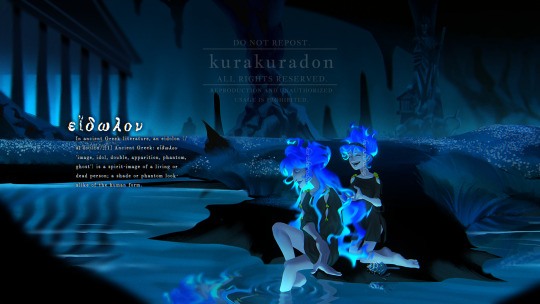
💀🏛️ 𝖆𝖌𝖊 𝖔𝖋 𝖙𝖍𝖊 𝖌𝖔𝖉𝖘 🏛️💀
#idia shroud#twisted wonderland#idia x reader#twst headcanons#twst fanart#twst oc#ortho shroud#twst ortho#twst idia#illustration#concept art#🛎on queue.#2023#fan art#🎥video#the worldbuilding potential the shroud family has… insane#the shroud clan would make for a badass dnd class tbh.#I’m not even a twst fan anymore. I’m just chewing on the potential of idia like a chewtoy
862 notes
·
View notes
Text
going feral
i’ve mentioned feral alphas and omegas in a few posts before, but what does that mean? this post will discuss ferality,* its causes, common feral behaviors, and treatment.
*note: i will be using ‘ferality’ as opposed to the technically proper ‘ferity’ because the latter is based on the latin root and sounds pretentious, and the former is based on the english word and is more accessible
what is ferality?
ferality is a medical emergency caused most commonly by social isolation. it causes those afflicted to behave erratically, and is the most common cause of forced bites. it is one of the top ten causes of death for those over 80 years old. it is also called ‘loneliness disease’ or ‘bite fever,’ and is often euphemistically described as ‘losing oneself.’ in the past, more than a week of ferality was incurable. today, synthetic hormones and careful medically supervised management leads to over 90% of those afflicted to make a full recovery if treated before one week, and over 80% to regain most normal function if treated before two weeks. outcomes become less positive the longer someone experiences ferality, but there have only been 1,762 documented deaths directly from ferality in the US since 1980.
why does it happen?
humans in the omegaverse are pack animals not only because their ancestors saw practical advantages to living, hunting, and raising pups in groups, but because they were biologically dependent on one another. in simplest terms, interacting with pack aids the body in maintaining its optimal balance between the twelve dynamic (i.e., alpha, beta, and omega) hormones. prolonged lack of social support means that these hormones become unbalanced, leading the body to a state of multi-system disregulation.
ferality greatly reduces people’s access to the areas of the brain responsible for decision making, planning, empathy, and abstraction. it is the body’s desperate bid to regulate itself by any means necessary. those afflicted become impulsive, aggressive, and violent in some cases, so it is essential both for the afflicted person and those nearby that if you spot a feral person, you call emergency services immediately.
how do you spot it?
feral humans are fairly easy to spot based on their unusual, erratic, impulsive behavior. they may sniff the air (or other people) unsubtly, grab or touch things (or people) and fail to respond to spoken language. ferality is most commonly associated with inappropriate scent marking and biting for good reason: a feral person’s primary drive is to share scent with someone to help bring themselves back into balance. there are also some behaviors that can generally be attributed to the different dynamic sexes:
alphas
feral alphas tend to make aggressive eye contact as a posturing behavior
growling, snarling, and clicking at no one in particular
clenching and unclenching the fists and shifting from foot to foot
violence, especially toward other alphas
an acrid scent, like burning rubber or sulfur
betas
feral betas’ eyes tend to shift rapidly, settling on nothing for very long
humming, clicking, huffing at no one in particular
similar to alphas, they clench and unclench the fists and shift from foot to foot
general restlessness, moving quickly
climbing and perching inappropriately (e.g. on tables, vehicles, or buildings)
a rotting scent, like old meat or milk
omegas
feral omegas tend to make glancing eye contact—they meet someone’s eyes, hold, and look away several times
whining, purring, and clicking at no one in particular
baring the neck indiscriminately in a bid to entice a bite
hiding/burrowing (e.g. under tables or in closets. there have been several cases of feral omegas in clothing stores nesting in the clothing racks)
a chemical scent, like bleach or ammonia
how is it treated?
if you spot someone afflicted by ferality, it is essential to call for an ambulance immediately.
treatment begins in the ambulance. typically, EMS technicians anesthetize the individual for everyone’s safety. once it is safe to do so, the technicians draw blood and begin measuring vital signs and hormone levels to ensure that the individual truly is feral. in the past 30 years, rapid tests have made measuring hormone levels faster than ever. these levels are recorded and passed off to hospital triage, along with a record of any emergency hormones administered.
the hospital then brings the individual to the feral ward, where they have an individual room and nesting material marked with synthetic pheromones of all three dynamics. if the individual has been feral for less than ~three days, typically this is enough to trigger their body to begin regulating itself. in some cases, the individual may need direct scent marking in order to jumpstart regulation. if it’s necessary, a nurse or technician will swab the individual’s face and neck with a cotton swab soaked in a synthetic pheromone solution.
in more moderate to severe cases, the individual may need further assistance regulating themselves. in these cases, the individual will receive intravenous hormones and extremely frequent monitoring.
typically, after a few days of hormone therapy, the individual’s body will have reached a state of equilibrium and will be able to maintain the balance itself again. however, in some severe cases, the individual’s body may be unable to maintain the balance. these people will need hormone therapy every other week indefinitely. in some cases (especially those where there is also malnutrition or other severe condition), the issue will resolve itself with time. in others, the hormone treatment is for life.
how is it prevented?
the best prevention is maintaining healthy pack bonds. if, for some reason, this is inaccessible, clinics, health departments, and hospitals typically have nesting materials marked with synthetic pheromones. in the past five years, some nesting material companies have begun offering materials marked with synthetic pheromones. in addition, matching agencies sometimes offer scent-marked clothing or nesting materials for sale, though this practice is judged fairly harshly.
#just picturing an old southern woman gossiping in church#‘did you hear about the jones girl? went off to college away from her pack and didn’t have nobody and bless her heart she lost herself’#that’s how that’s used lmao#i love making up statistics#the last biology class i took was in 2010#im not a scientist#omegaverse#alpha beta omega#omegaverse headcanons#a/b/o dynamics#a/b/o headcanon#a/b/o#omegaverse dynamics#omegaverse headcanon#omegaverse ferality#ferality#feral#feral alpha#feral beta#feral omega#omegaverse feral#a/b/o feral#alpha#beta#omega#alpha headcanons#beta headcanons#omega headcanons#omegaverse worldbuilding#omegaverse anthropology
251 notes
·
View notes
Text
LIST OF THE FIVE PERCER’S UNIONS (yes the in universe class system is worker’s unions… the game very much has a political framework. Cause capitolism sucks)
Engineer’s Union
A cohort of steadfast trainwrights and mystwork craftsmen, none know the workings on an engine better than a seasoned Engineer. They are well trained in repairing, upgrading, and operating trains, and related tools.
Nav’s Union
You're never lost near a Nav, a loose gathering of explorers, wanderers, and storytellers of all sorts. Skilled in finding their way across the sea of rails and myst, and negotiating with all manner of folks they find.
Shotgun’s Union
“Shoot first, check bounty later” is the motto of the Shotguns, a security paramilitia of mercenaries, ex soldiers, and hitmen. If you need a train protected, a Cryptid eviscerated, or just a threat looming. Bring a girl with a gun.
Kindler’s Union
Beware the smile in the flame. Reckless headonists, the Kindlers keep the Engines hot with Sin, and force back enemies with an amount of explosives . . . that is probably not legal in any jurisdiction.
Porter’s Union
The forgotten Union though perhaps the most populous, a Porter's job ain't flashy, but it's honest work. A regimented organization assuring the safe delivery of passengers, packages, and parcels with paperwork, a smile, and sturdy arms.
#shit post#shitpost#worldbuilding#world building#ttrpg#ttrpg creation#indie ttrpg#trains#steampunk#ttrpg classes#workers unions#workers unite#anti capitalism#Mystwork Heart
52 notes
·
View notes
Text


my personal subjective tl;dr of all the classes and aspects in homestuck, based on common elements shared by their users and some speculation
useful shorthand to help you find your own and understand what others' mean
40 notes
·
View notes
Text

The dreaded gender (?) update… The Enithian genders are more of a caste system, only ever being labeled as ‘gender’ because of how it affects sexual relationships.
And it’s a really bad system! It only has advantages for a handful of very powerful people- it’s really just a way to control how people can act and work. But it is the standard on modern-day Enith, and while it’s not held nearly as strictly on other planets, it has become the standard for the galaxy at large.




#The majority of jobs that don't really fit into one category are shoved into whatever fits best#like entertainers are usually shoved into the steward class.#little bird worldbuilding#greetings from enith#my art#speculative biology#spec bio#xenobiology#worldbuilding#and while it's not actually a category 'unemployed' is a thing. It's super abnormal thing to Enithian society and most of the people who#don't or can't fit into any of the categories are pretty much shunned.#Like a lot of people who leave Enith are just people going to planets that offer unemployment benefits.#but also unemployment is what subsistence farmers are grouped into? So it's just a completely nonsense thing made as an excuse to#look down on the 'undesirables'
23 notes
·
View notes
Text
Modern fantasy writers are like
"I want to tackle themes such as misogyny or clssism or racism or homophobia in my work!🤗🤗🤗 No there's none of that present in my book, this society that mimics 1300s central Europe suffers from none of these issues because thats not progressive and if we have DRAGONS and MAGIC why do we need this ahaha am I right? 😅🙂↕️Except for this individual conflict in this novel the characters have to overcome but that's an isolated case. Oh look there's a Queen!"
#imagine if real life worked that way.#Thank you Queen Elizabeth I for destroying sexism#this is about The Priory of the Orange Tree but it applies to. so many works.#making for inconsistent worldbuilding.#priory ends with the monarch being like. i will step back in ten years or so <3 vaguely pointing to democracy or something#okay fantasy england enjoy your civil war I guess#or the class conflict vanishing in arcane
22 notes
·
View notes
Text
hey guys did rhysand own slaves. don’t be angry this is a serious question. like i know the inner circle/Night Court was on the mortal side of the war but what exactly was going on in the 28ish years beforehand. because the books as far as i remember seems to imply that fae owning humans was pretty ubiquitous across all of prythian, but Night joining the mortals seems to indicate they were anti slavery, so does this mean they freed their slaves previously or only freed them once the war broke out in solidarity? I don’t have definite answers but will say that Rhysand’s weird centrist approach to the human fae conflict doesn’t give me a good feeling.
#anti sjm: worldbuilding#acotar worldbuilding#rhysand#rhysand acotar#i’m tagging this rhysand#not to bash him#so that any rhys fans and scholars can help me#please tell me what you know about the night court’s history with slavery#slavery in acotar#class in acotar
26 notes
·
View notes
Note
Imo there is not enough Valyria content out there so I would LOVE to see your thoughts/headcanons on what the geography, city, fashion, etc. looked like
okay this ones a little difficult because even though Valyria is clearly inspired by Rome, I don't like roman (aka greek) architecture for them it just doesn't really fit to me. Honestly its hard to assign any real life inspo because the existence of dragons would have had some major impact on the society as a whole, architecture included
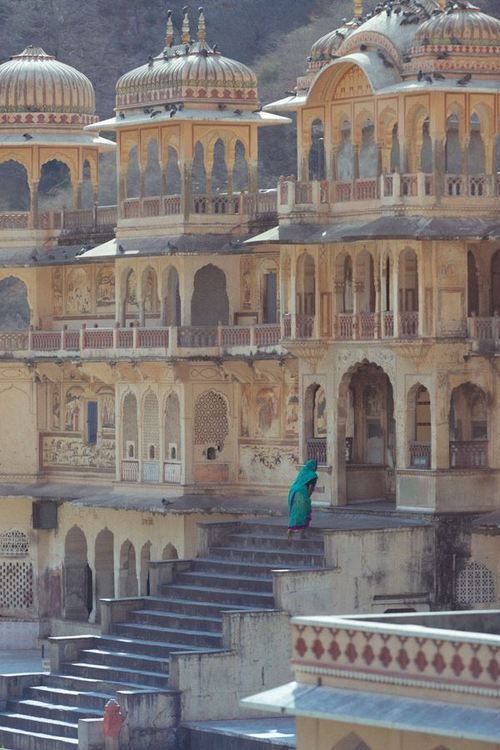

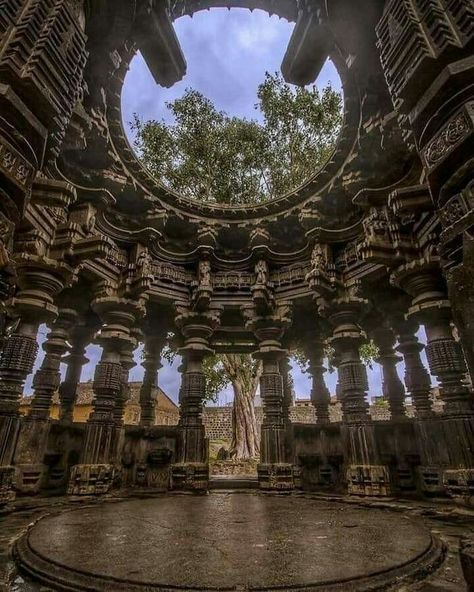
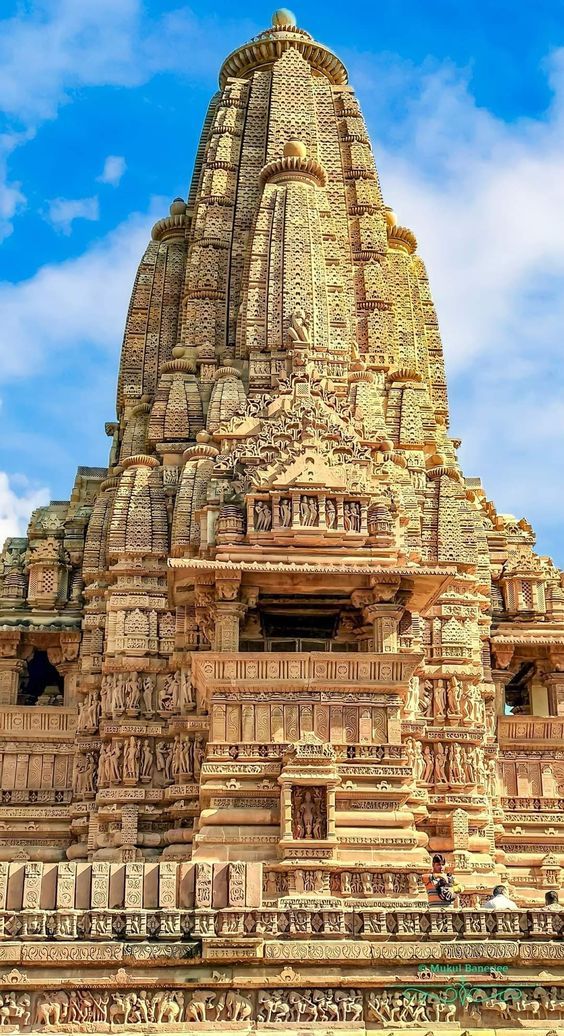
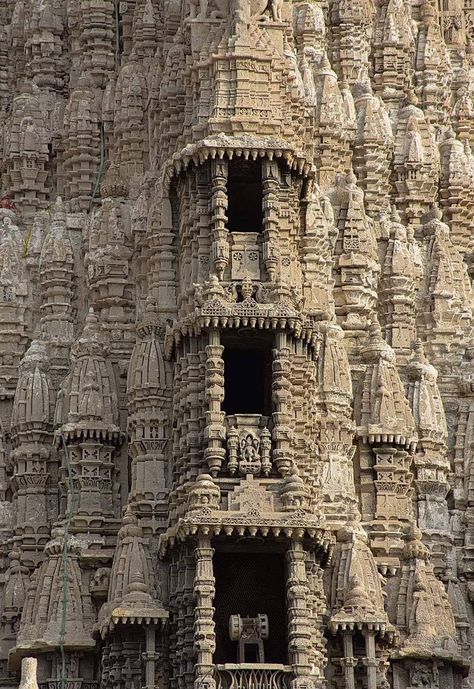
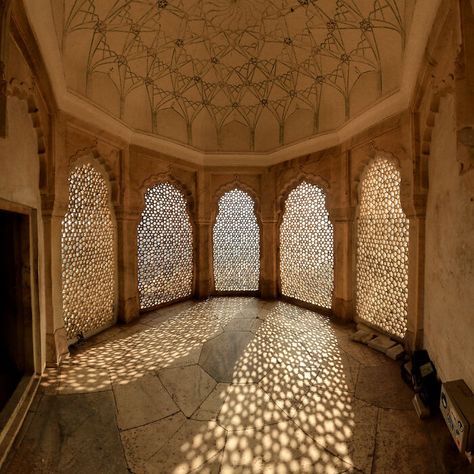
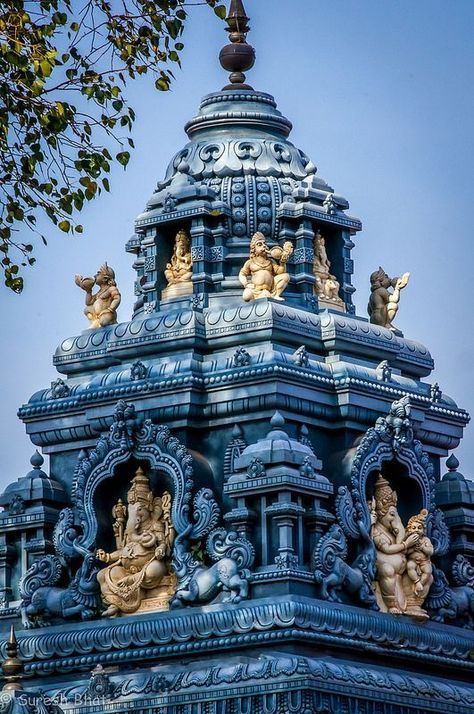

However, if I had to pick a type to ascribe to Old Valyria, my first choice would be a twist on Hindu architecture. I am absolutely obsessed with the sheer amount of details on the buildings (especially the Meenaskshi Temple at the bottom, everyone please go look at more pictures of it it's gorgeous). It's incredibly complex but also tends to be very symmetrical, the styles perfected over hundreds and hundreds of years. I also really love the idea of the spaces being open and well lit, it fits well.
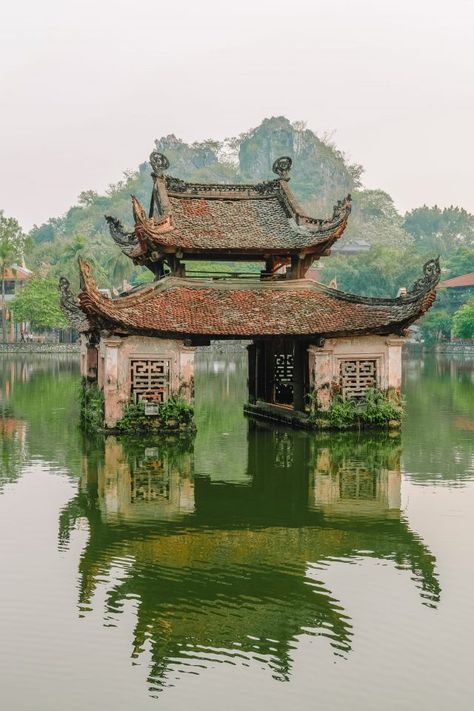
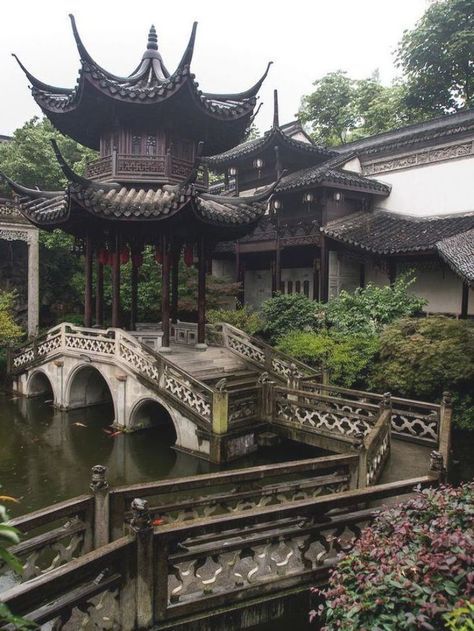

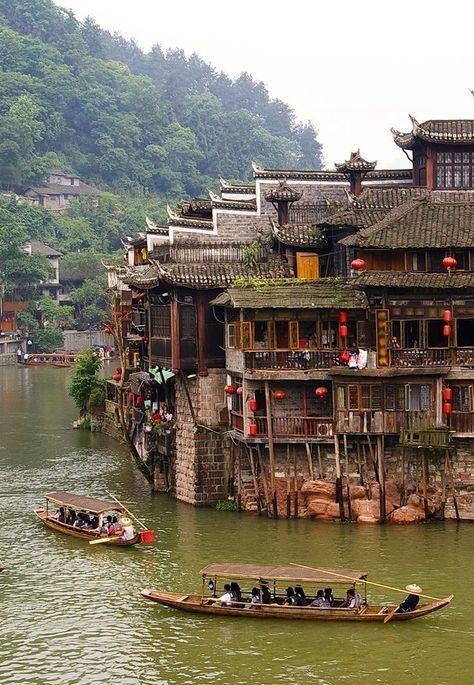
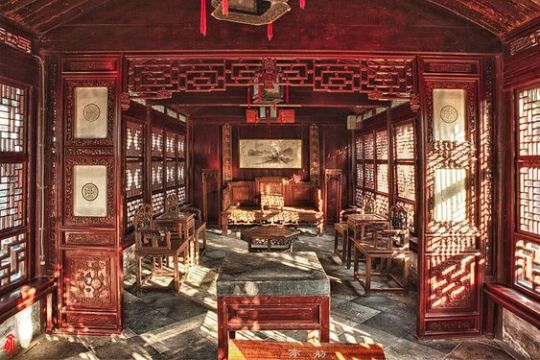
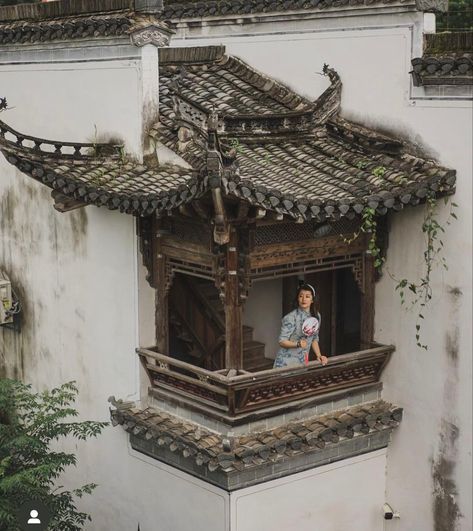
Another alternative is traditional Chinese architecture, with the added bonus of dragon motifs that are already there :D Another type of architecture with an intense focus on details, symmetry, and how the design of a space affects a person. Architecture is a reflection of where a society is in their development, and I find that this could be a good inspiration for Valyria, an advanced culture with the excess time and resources to build things like these.
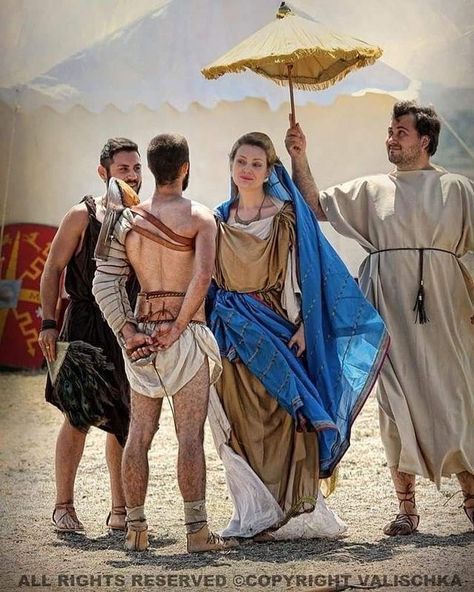

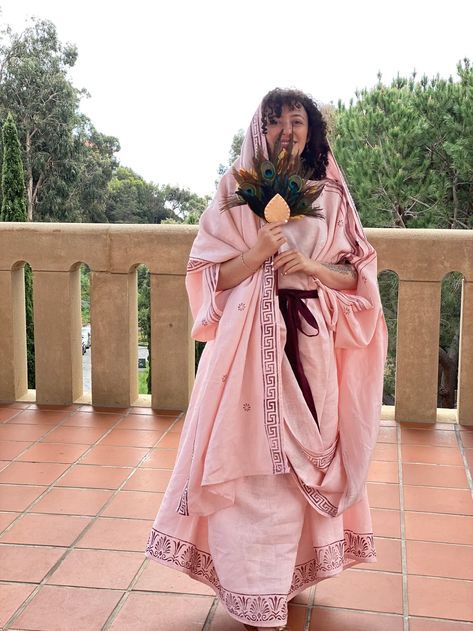




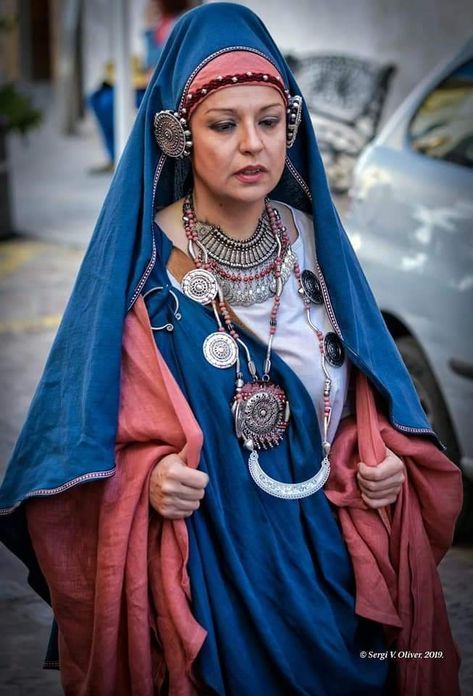
Woof okay clothing is all over the place I need to brainstorm and tighten my focus on different inspos (also I wish I could draw well so I can blend these styles properly but alas...anyways we ball). The main thing is mediterranean cultures I know that much. The Iberian Peninsula, Rome, Greece, the Minoans, Malta, Cyprus, etc etc all the ancient clothing and traditional costumes from around the Mediterranean Sea. Valyria was in a warmer, damper climate, meaning lots of loose fabric that could let air through but wouldn't weigh you down. Also doubling as shields from the sun. You get the gist I use this type of clothing all the time.
Okay Random Cultural Things Time
Art and literature? honestly really important because while yes this was a conquering civilization, they needed their exploits to live on in wall frescoes and written epics and dramatic pantomimes. I think they were literate, and probably spread written Valyrian to all the colonies, so that they were easily assimilated. People particularly fond of their dragons had pictures of them made and statues sculpted so that they would live on after their death.
Sports and entertainment also pretty big as well. Valyrians were a highly competitive people To Me so I think that riding, swimming, wrestling, racing, and other games were popular with the people, even those in the higher classes. Also fuck it I bet they raced their dragons. A really tall amphitheater where rich men lost money as they watched dragons circle around the ring. Or fight in midair, if the dragon riders were prisoners or sentenced to death.
As for religion, the Valyrians worshipped the gods that gave them dragons, but also tolerated the other faiths of the places the conquered, just in order to ease tensions (and because they had no dragons so why would they worship dragon gods). I like the idea of Roman household gods, with small altars in every home. Statues of the gods of the home, along with any gods a particular family might favor, along with ancestor veneration and dragon veneration. Dragon skulls and dragon masks on the walls baby!
#woah this was really long#spent my entire women and gender studies class doing this sorry Judith butler#asoiaf worldbuilding
94 notes
·
View notes
Text
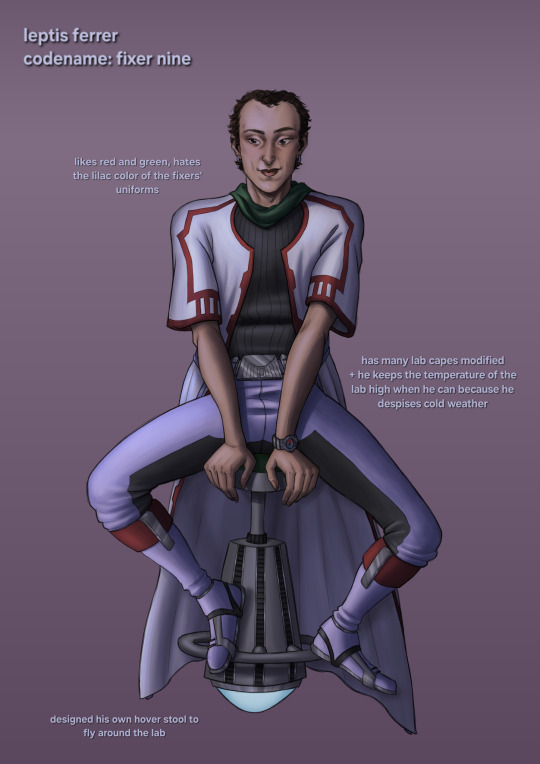

meet doctor leptis ferrer, also known as fixer nine!
he collaborated with cipher thirteen on a few crucial missions, but his most important aspect is his research.
his backstory before becoming a fixer + some worldbuilding of his home planet under the cut!
he was born on niamos, that, at the time, was shifting from being a planet with its people inhabiting it to the Space Beach™ we know from andor. amidst this changing environment, little leptis was born.
niamos was divided into three main groups of people. the natives; the tourists, who were growing in number, but only stayed temporarily; and the offworlders who settled down and started to run mainly tourism-centered business. the niamos people, called avile, still ruled over the planet, having their own political organizations that excluded the newcomers. aviles allowed the offworlders to settle down in their certain parts of their lands only because that generated profit through taxes, but they weren't allowed to fully integrate in their society nor leave the permitted areas under any circumstances.
actually, the aviles allowed these settlements rather recently, after a series of revolts in the lower classes. in theory, their system was a democracy - in practice, only rich enough people could afford to become politicians, because there was no retribution for it. so, they decided to allow newcomers to settle in, with a tax, that would be used for the retribution of political positions. the more people started moving to niamos, the more new positions could get paid.

(quick colored sketch of a part of their territory - pardon the ugly af buildings but i hate drawing them)
when the initial wave of new politicians from the lower classes got into the system, they started turning the system into a full, direct democracy, reform by reform. most roles were assigned by casual drawing from a list of volunteers, and no one could keep their chair longer than a year in every position. but, after the initial wave of openness and inclusion, things changed.
initially, there weren't any laws on citizenship or access to politics. it wasn't explicitly said that offworlders couldn't partake in politics, so when they began taking interest in it, with political programs that addressed their needs and problems, the natives started to fear that their flourishing tourism business would change the political balance they had reached. many feared that, in the span of a few generations, the niamos would be governed by the interests of the tourist business, that attracted visitors (and their money) from many star systems.
so, they started to legislate. to be a niamos citizen, one had to be born in a family of niamos people, quite obviously. at first, children born of mixed parents weren't allowed citizenship, and weren't even really a thing. but as the offworlders areas grew larger, and more offworlders settled on niamos, some protests arose.
then, they had to change the legislation. they were a people with a strong and deeply felt culture - they decided to use it as a base to legislate further. the niamos had many rites and trials, and a complex language, called caile. one would become citizen only by successfully passing all the trials, partaking in all the rites, and fully learning the language.
the first trial was a long pilgrimage with a wooden boat (and an animal) to an island. this allowed the child (around 6-7 y.o.) to go to school, where they could learn the language. this first trial was easy for any "full" avilec child to pass, as they traveled around the various islands of their world on a daily basis. offworlders, however, were still confined into one section of a bigger island. this allowed only children who spent enough time sailing with their avilec parent to pass the test.
then, they would be allowed into a school that would teach them how to read and write. the school, though, only taught in avilec language - so, the children already had to speak caile at home, to be able to pass the tests at the end of the year. after that, it mostly got easier - one would study the niamos history, and was asked to partake in every smaller rite that tightened the community and better integrated the new members.
around 18, though, to become a legal adult, there was another trial (here, it granted access to vote and independence. then, as one got older, they'd have to pass a trial to be able to volunteer and be elected for each position - the age grew with the importance of the role, but the difficulty of the trials only decreased). it was a relatively simple trial: it was a boat pilgrimage around every island in the archipelago - something anyone could do.
but leptis failed it.
when he was around 14 years old, he went on a boat pilgrimage with his family to reach a sacred island in front of the offworlders' sector. there, a young sea monster who had lost its way attacked him. he clenched his big jaw on his body - the monster's mouth was big enough to cover his entire torso and get a good grip anyway. as his family panicked, from the shore, some tourists saw the scene and called for help, and help arrived in the form of medics on a speeder and an offworlder with a gun, who shot the beast, who immediately lost its grip on leptis.
the offworlders' hospitals, with special legislation, were open to everyone. it was the only thing the niamos paid a tax for, as they recognized that the offworlders' medicine was better than theirs for some things. they did mostly go to their old medics, but when that failed, they relied on those hospitals as well. knowing that no niamos medic could save their son, his parents allowed him to be taken away with the speeder.
in his parents' eyes, his survival was a miracle, and they accepted it without questions. instead, little leptis began wanting to know how he was saved. so he began studying medicine. he devoted himself to the subject. even as he ruined his connection to the rest of the community (he stopped partaking to the rites - he wasn't forced to go, as both his parents were aviles, and nobody thought a niamos would stop partaking in the rites, so there weren't any rules on that) he kept on studying.
when he turned 18, he had to leave his studies to complete the trial. he was doing well, as everyone always did, until he reached the spot where he was attacked. he never went back there since the incident. suddenly, he relived all of it again, and couldn't move anymore. he was paralyzed by the flashback, and trembled heavily as he realized that there was a wound the doctors hadn't healed. unable to continue, he failed the trial.
no avile had ever failed the trial, but the law seemed clear - he couldn't have access to politics, and wouldn't become an adult. he became an outcast - his peers continued their lives while he was forced out of it, forced to depend on his parents, forever. but mostly, he started to have trouble dealing with the incident like he never had. he was distressed and tense, and couldn't sleep properly. he went back to the medics, and they told him he had ptsd - and that they couldn't do much about it. that shocked him - they saved his organs from failing and stitched his broken body back together in ways that would seem impossible to comprehend, but they couldn't do nothing to heal his hurt brain?
so that became his research interest.
#BSBSJSJ ONE DAY I'll make a part 2 with his research and the stories with tar'x hihi#FINALLY MY FIRST HUMAN OC i never had one till now and i had to have one. aliens are too much fun though#Anyway idk why one of the sketches gave off powerful House MD vibes and. I LOVE THAT so now I'm very fond of him#some fun facts: most of the worldbuilding is inspired by studying finley's comparison of greek democracies and ours#+ his appearance was inspired by a hot guy in my class (apparently i like balding people??) and his name is an homage to that#because he shared a name with one of my favorite 15th century painters and one of his most important works depicted a saint called ferrer#SO! FUNNNN#idk if I'll post more about avilec culture but. it's highly inspired by the caledonians (due to where niamos was originally shot in andor)#little spoiler about his research in the sketchbook page!#star wars#sw#star wars the old republic#swtor#star wars oc#the old republic#star wars story#human oc#niamos#fixer oc#star wars fanart#star wars art#g posting
18 notes
·
View notes
Text
in the language worldbuilding notes. writing "dialect continuum" "mutually intelligible" and things of such nature
#can you tell im a little too excited about my linguistics classes#you either die a leigh bardugo or you watch yourself become a j.r.r. tolkien#no shade to leigh bardugos languages its clearly not the most important part of her worldbuilding#and i also never really just took an existing language and shifted it slightly to the left. i just borrow some phonology (badly)#but yk what i mean. hopefully#*sheds a tear* i came so far since just trying to mimic latin#writing#linguistics
21 notes
·
View notes
Text
ohohoho ideas in brain >:) now this is just a potential idea because I think it could be fun, but I also don’t know how well it would mesh with current mudlore. ANYWAY.
Basically, the idea is that the original clans (pre-micaclan's formation) each had a patron spirit to like. sponsor the first leaders with their nine lives or whatever. And they have to be old spirits, with deep connections to the grounds the clans make their territory. And this is how starclan kinda forms, with the backing of this Extra Strong Ghost that kinda rallies their spirits in the beginning before finally passing on. Maybe the only ghosts that can be this type of patron spirit are the ones who feel as though they can't pass on without leaving a legacy?? idk yet I'm still Thinking.
So a lack of Strong Ghost Friend is stopping Mica from having a legitimate entry into leadership with the nine lives and such, and no starclan for her and her clan(?? still thinking about this). Maybe a healer from one of the other clans defects/gets kicked out, and they explain this all to Mica after joining her little not-yet-an-actual-clan. So mica is like, where do you even find an old ghost. how am i gonna get one of those. And one of her friends is like "well they say everything further upstream of the river is Super Cursed and my friend's mom's cousin told me it's because of an ancient ghost there that hates everyone and everything" and Mica goes "PERFECT I'll go talk to them!!" ignoring how Healer is like "THAT PLACE IS CURSED FOR A REASON DO NOT GO THERE"
So Mica goes upstream with a couple of her buddies, until she finds the river's source. And there she meets Ancient Angry Ghost, who turns out to be the ghost of a smilodon. It pops up out of the water and it's not saying any words but it's basically radiating 'you're gonna die' energy. And Mica just starts talking to them. Like she's definitely freaking out and terrified but she's SO good at playing cool. And maybe she leaves after they get too angry, but she comes back the next day. And then next. And the next. And she eventually manages to wear down this angry prehistoric ghost into being her friend.
Maybe it turns out they stuck around so long because they were the last of their kind, and they never got closure for the loneliness they felt in life. They come to like Mica for her brash spirit, unwavering courage, and surprisingly sharp cunning. When Mica offers them friendship, offers them a group to carry on their way of life in the present day, they agree to be the clan's patron spirit.
This is all because I think it would be cool for Micastar to have this giant ghost warrior of Ye Olden Days following her around like "YOU MUST BE WILLING TO KILL TO PROTECT YOUR OWN. YOU MUST TREAT YOUR ENEMIES AS THE DUST BENEATH YOUR PAWS. DEFEND YOUR FAMILY AGAINST ANY WHO WOULD ENDANGER IT" and Mica being like "it don't bite :)" and the other clans being like "YES IT DO—"
#micastar#micaclan#mud worldbuilding#mudlore#<- POTENTIALLY#not too certain of this idea but its been knocking around in my brain for a few weeks so I thought I'd share with the class#maybe this could be an au if I don't end up liking how it interacts with current day mudlore#long post#smilodon patron ghost
118 notes
·
View notes